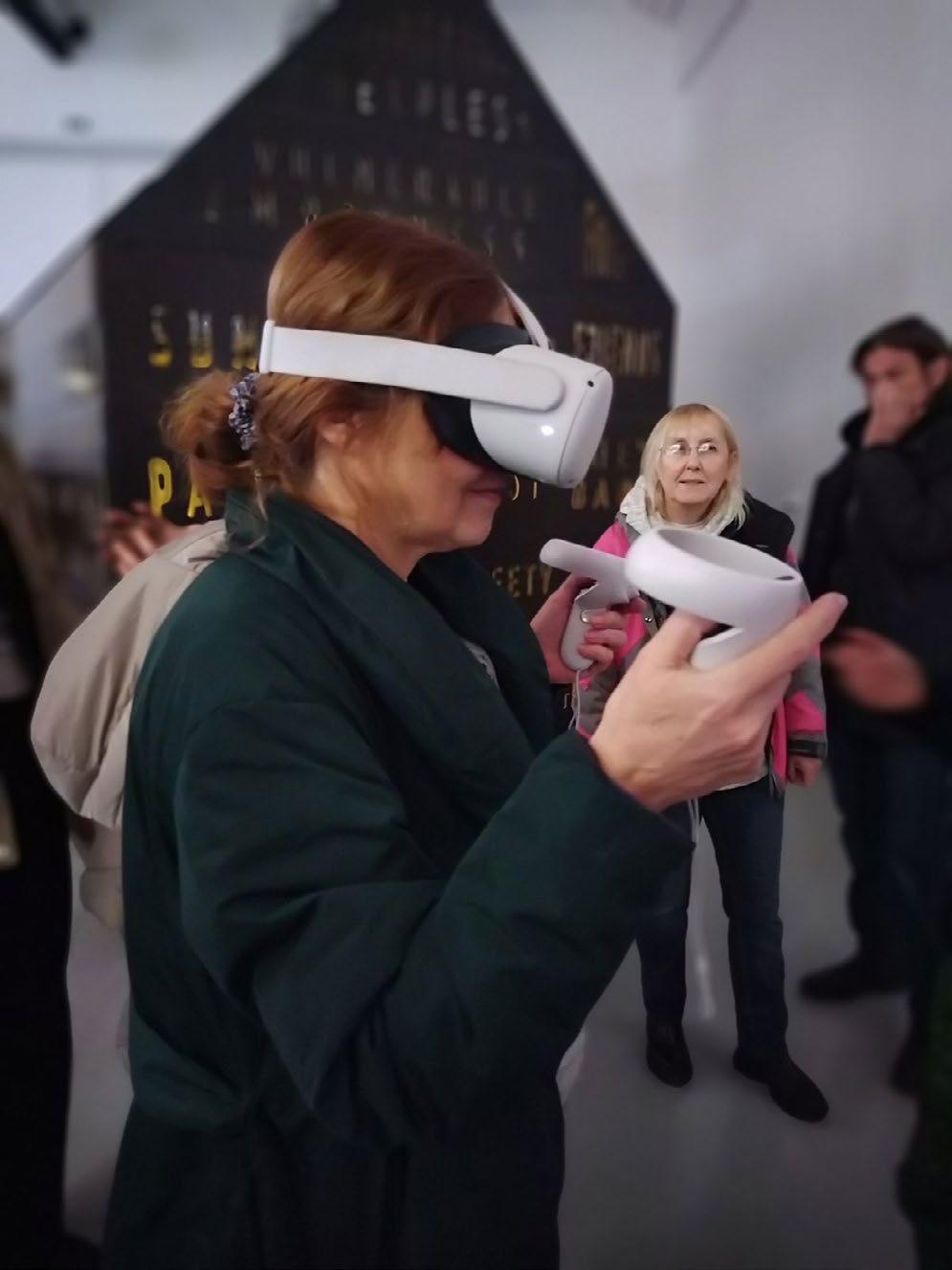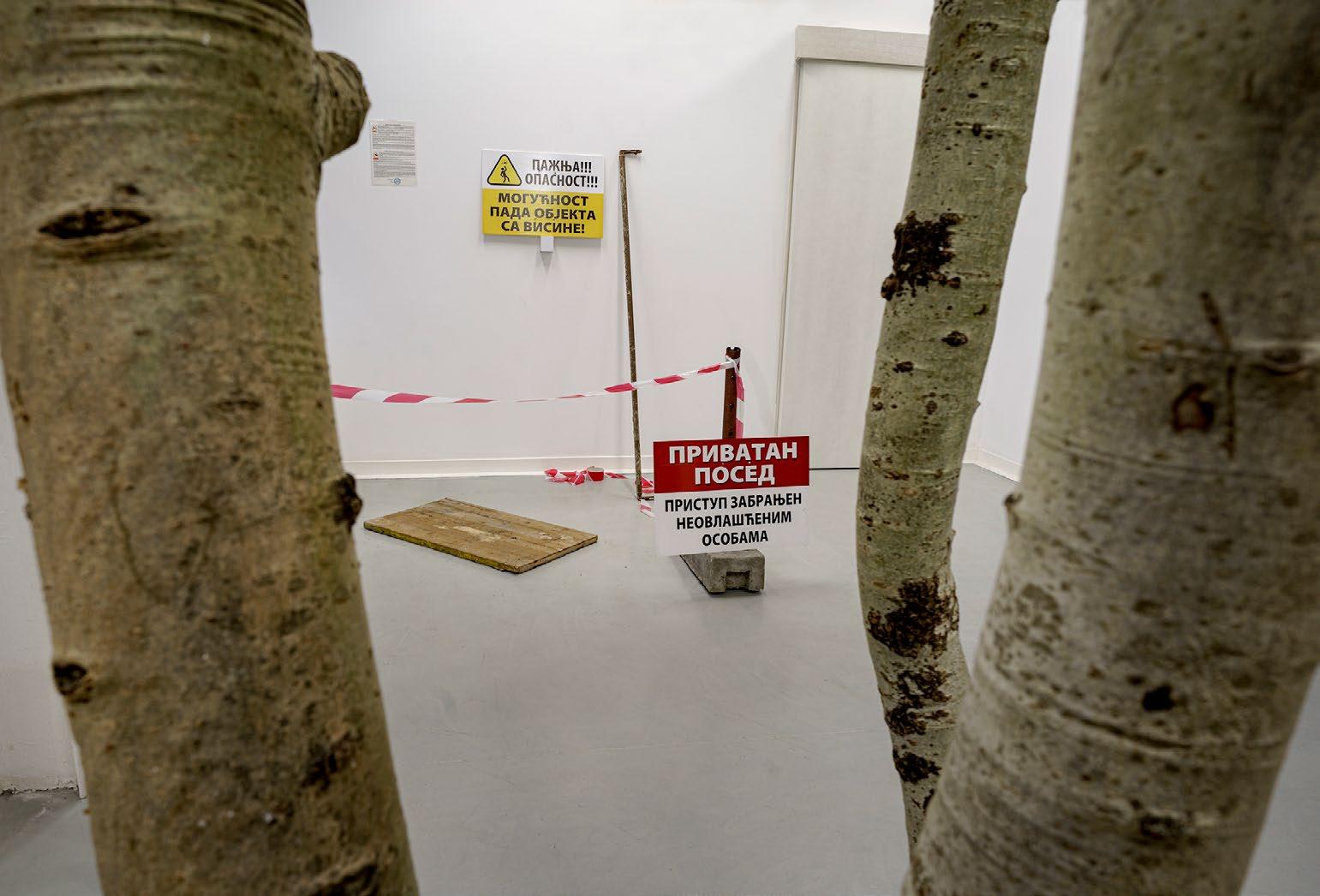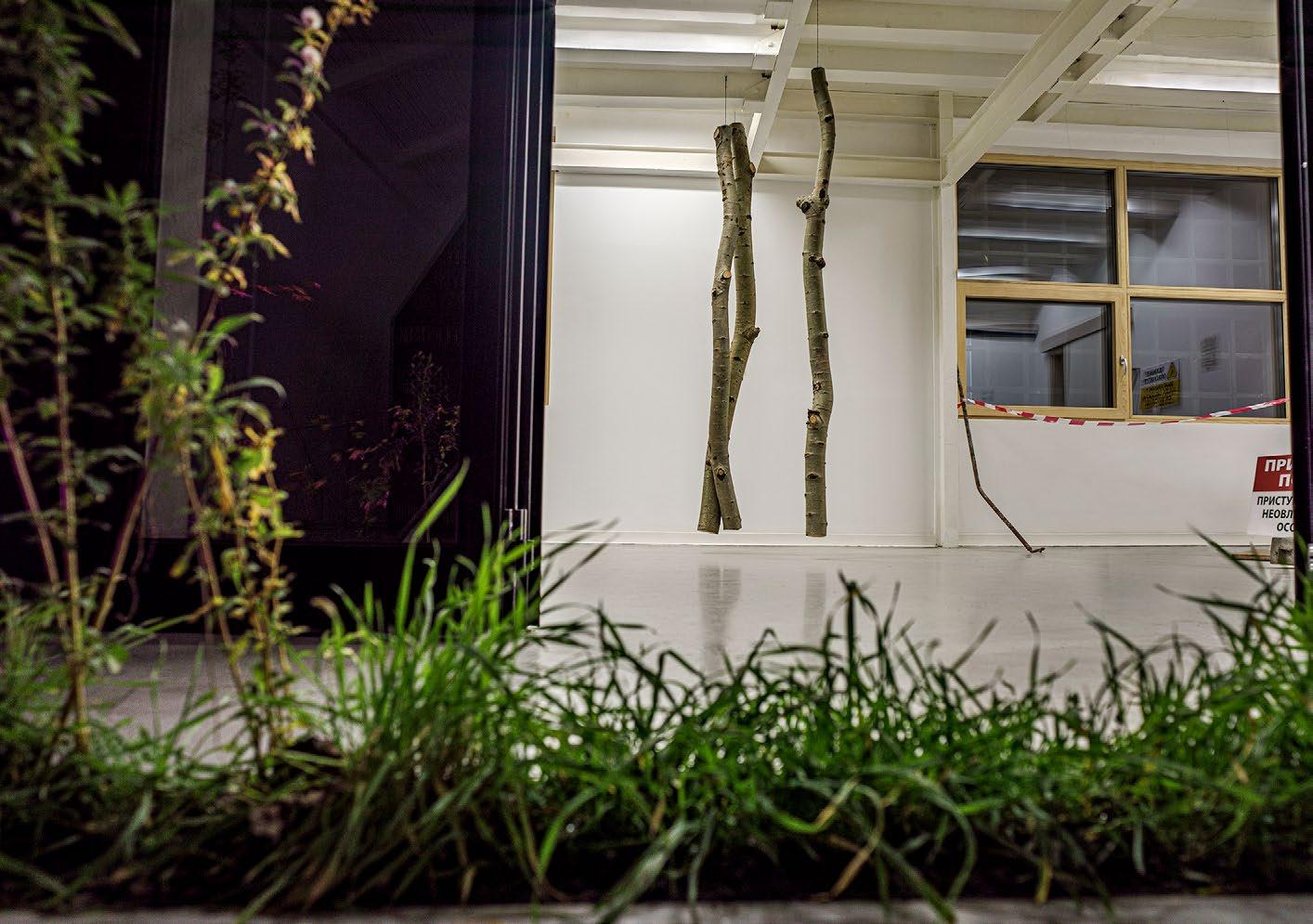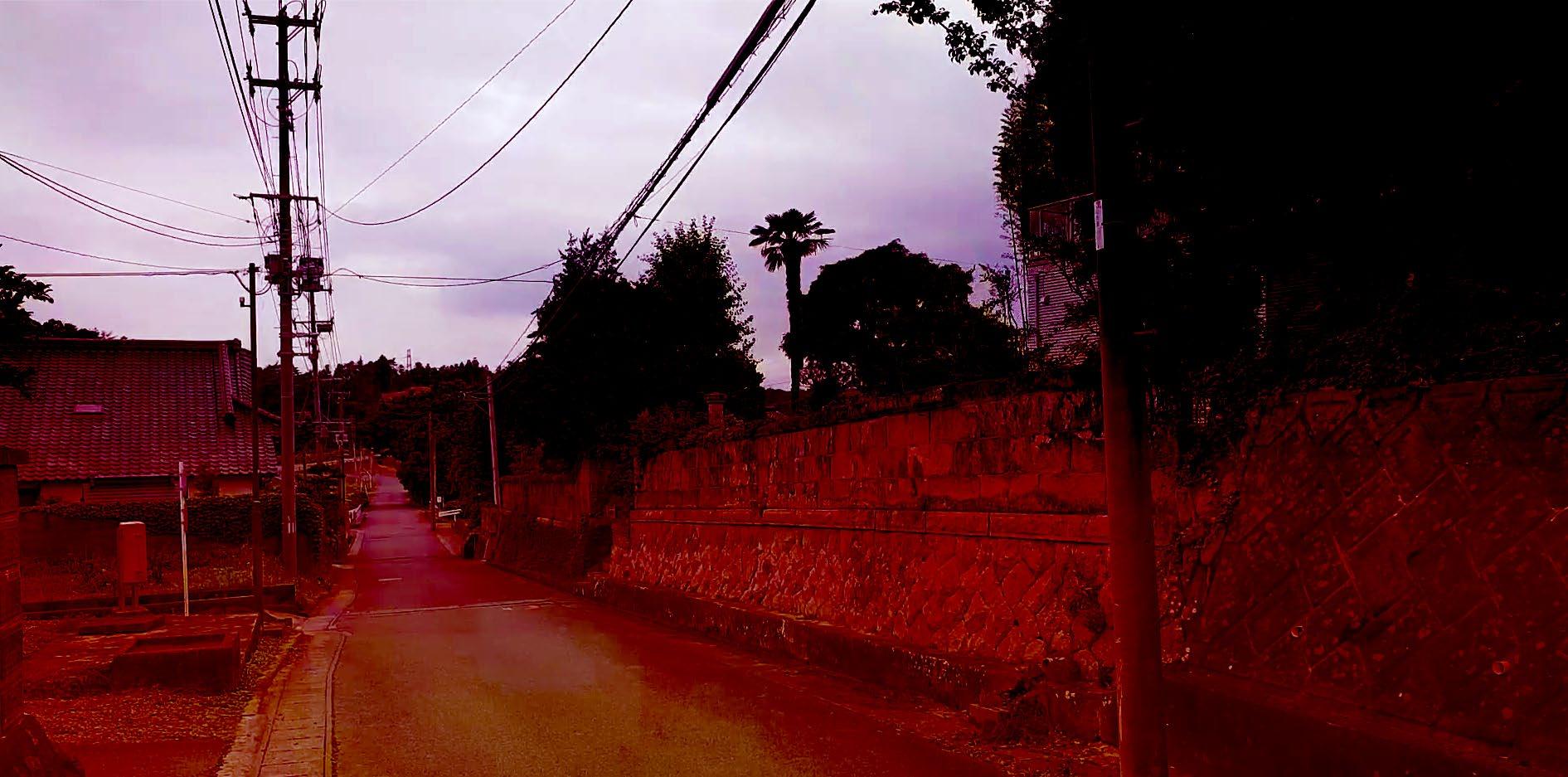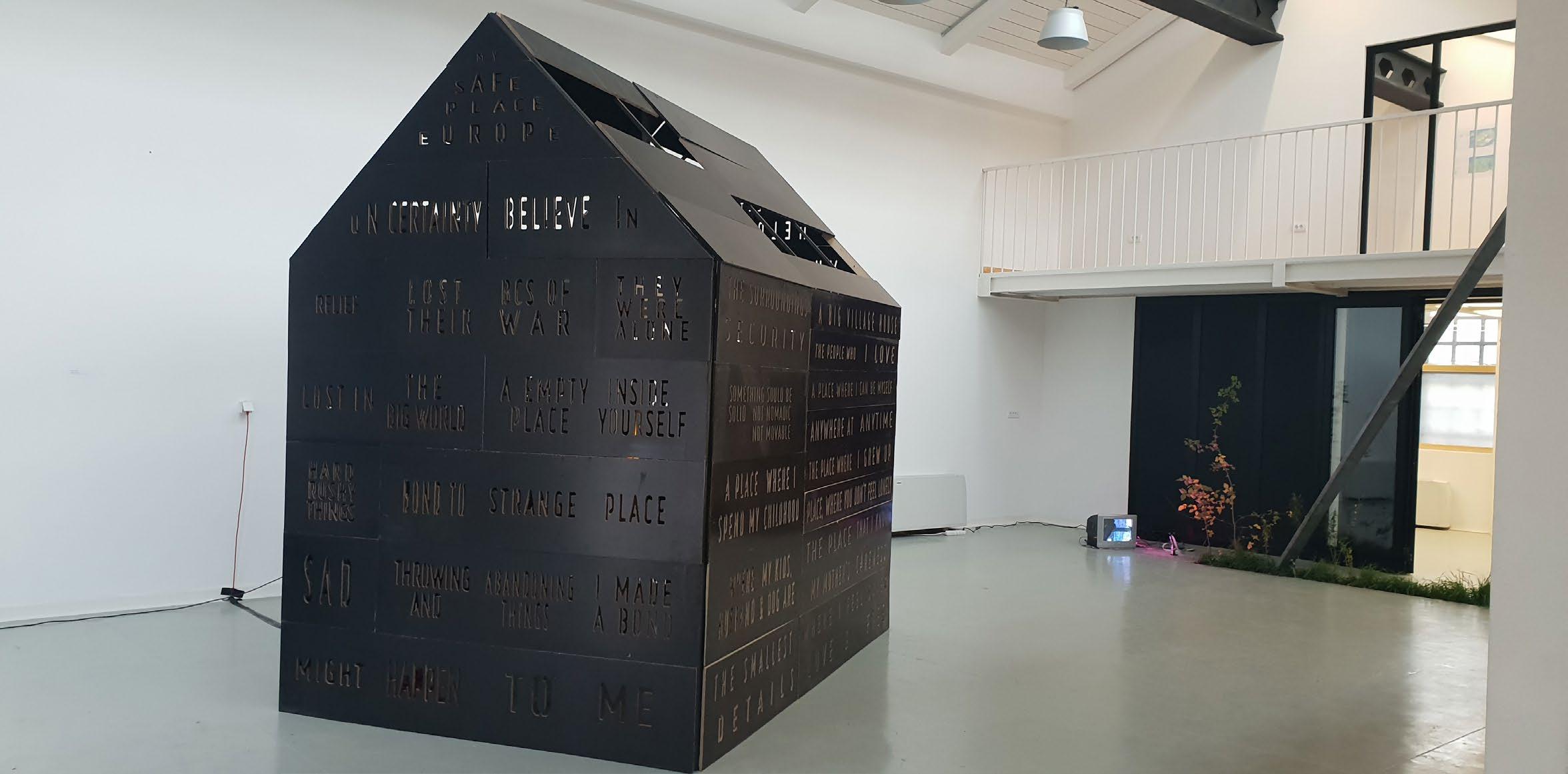Third Skin
“The house isolates us from the outside world as the skin and the body do. It protect ushide us, and locks us in a safe room, in safe space. “
Erwin Wurm
”[A] woman must have money and a room of her own if she is to write fiction; and that, as you will see, leaves the great problem of the true nature of woman and the true nature of fiction unsolved.”
Virginia Woolf
006 007
Uvod Foreword
In our society, the idea of ‘home’ has many multiple connotations (homeland, attachment, mother language, etc.). Also, ideas surrounding migration, natural catastrophes, pandemics, globalization, and homelessness. This ongoing cross-cultural art project has story-telling qualities and poses many questions concerning individual and cultural identity. How does the idea of ‘home’ relate to personal and national identity? What does ‘home’ mean to us? What is a ‘home country? When do we truly feel ‘at home’? What happened to those who lost their ‘homes’?
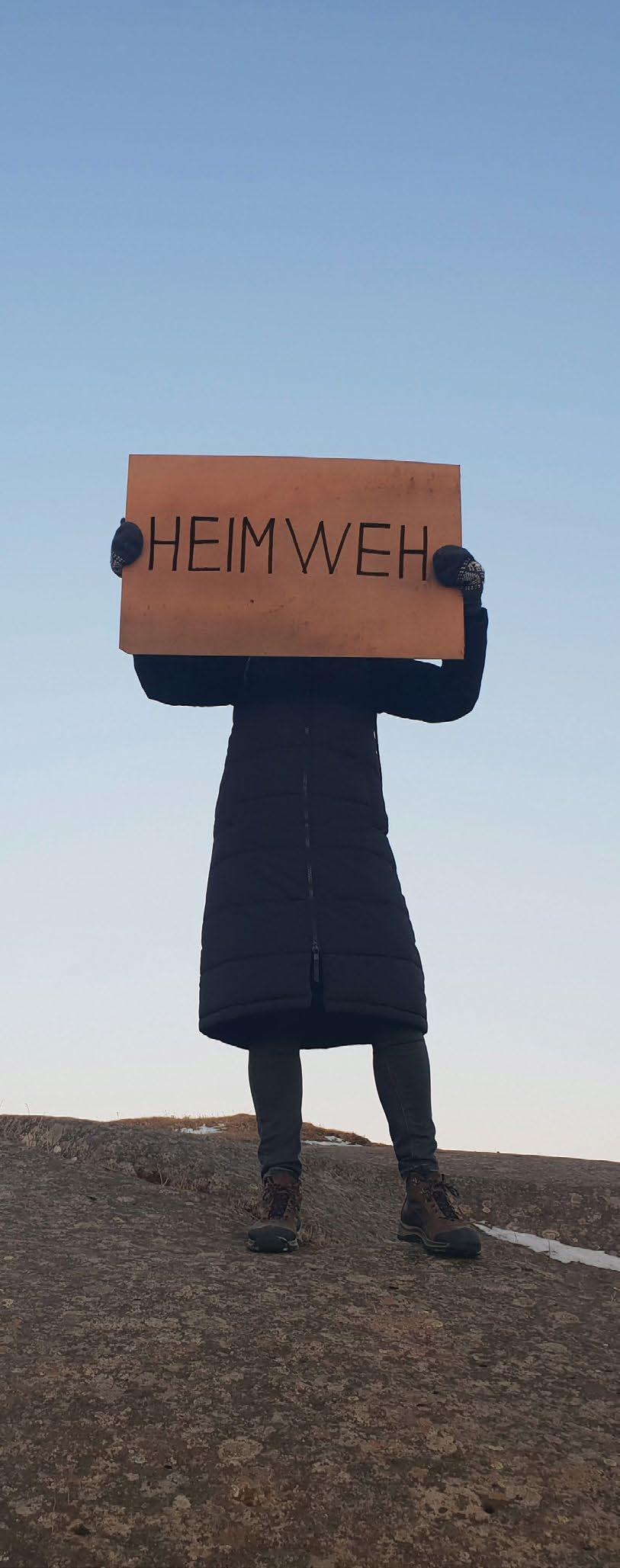
What about archetypal, (un)conscious aspects of ‘Home’? ‘Home’ is a word associated with attachment, belonging, shelter, refuge, comfort, and identity. But, what happens when we change the way we see things? We may be experiencing a great reconsidering of our physical and emotional priorities whether we have abandoned habits or behaviors during the coronavirus pandemic, wars, natural disasters, or economic loss. ‘Home’ could mean isolation, stigma, hikikomori7, social or mental disorders. How can we reduce anxieties, and symptoms of depression following isolation and loneliness?
7 Hikikomori also known as acute social withdrawal. Hikikomori as a condition in which the affected individuals refuse to leave their parents’ house and isolate themselves away from society and family in a single room for a period exceeding six months. According to Japanese data the hikikomori would be 90% male.
Have social networks become our home? Has the experience of home lost its ethnic specificity in the context of globalization? To what extent do social marginalization, pandemics, and migration affect the content of the term? How does society see migrants and the homeless people, men and women? Can art make us more socially responsible and sensitize our relationship with the marginalized, the Other and the different? How about the people who lost their homes? Is anyone thinking about them? Do we feel empathy? Can we help them, and do we want to help them? Is it our individual or collective responsibility/guilt?
Keywords:
homeland, fatherland, mother tongue, heimweih, comfort, fernweh, borders cliché, stigma, “a room of one’s own”, women’s safe house, “A Doll’s House”, shelter, senior housing, community, gentrification, relocation, abandoned buildings, hikikomori, anxiety, depression, isolation, loneliness, migration, refuge, natural disasters, economic loss, brain drain, exile, nomadism, digital nomadism, empathy, ecology, climate change, absurd
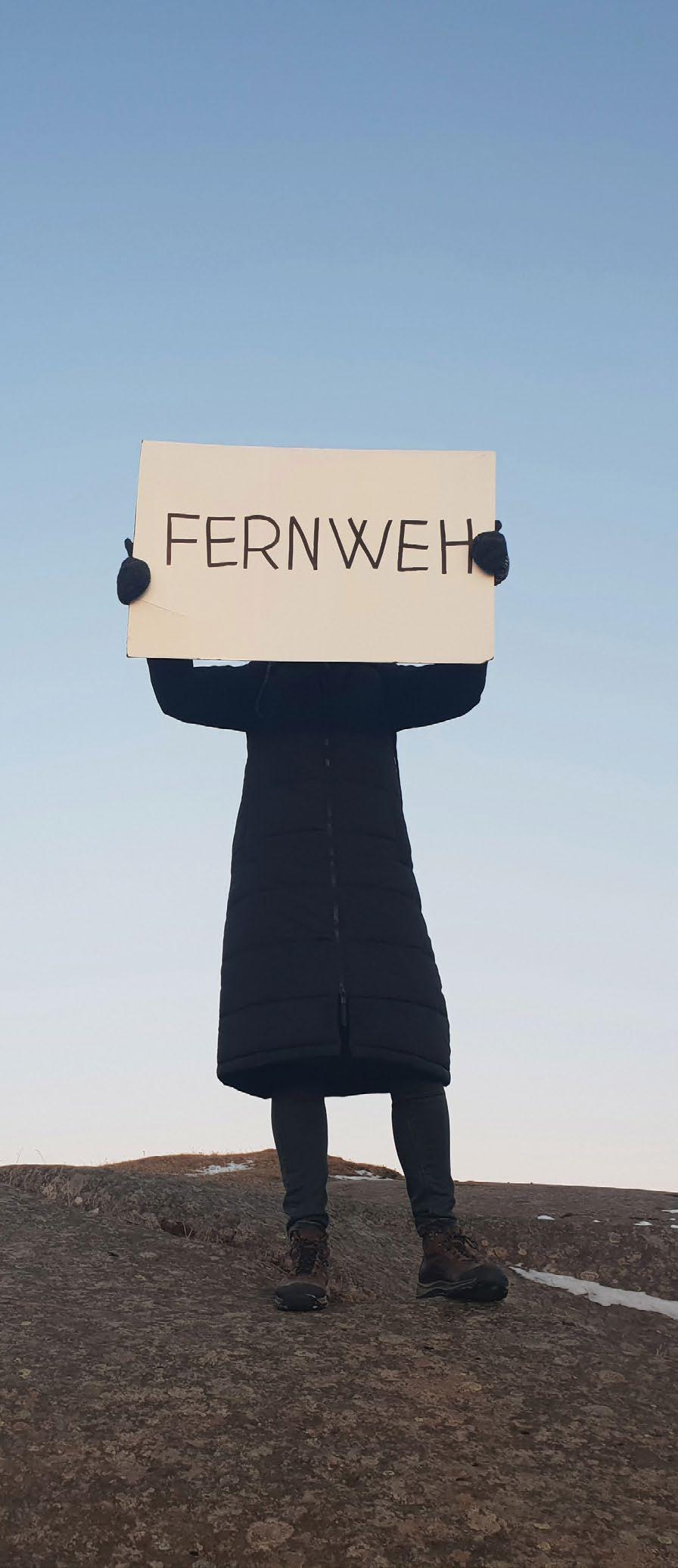
008 009
// Ljiljana Maletin Vojvodić & Dragan Vojvodić, Fernweh, Reykjavík, 2022
photography, street action
// Ljiljana Maletin Vojvodić & Dragan Vojvodić, Heimweh, Reykjavík, 2022
photography, street action
“Home is the place that generates Other”

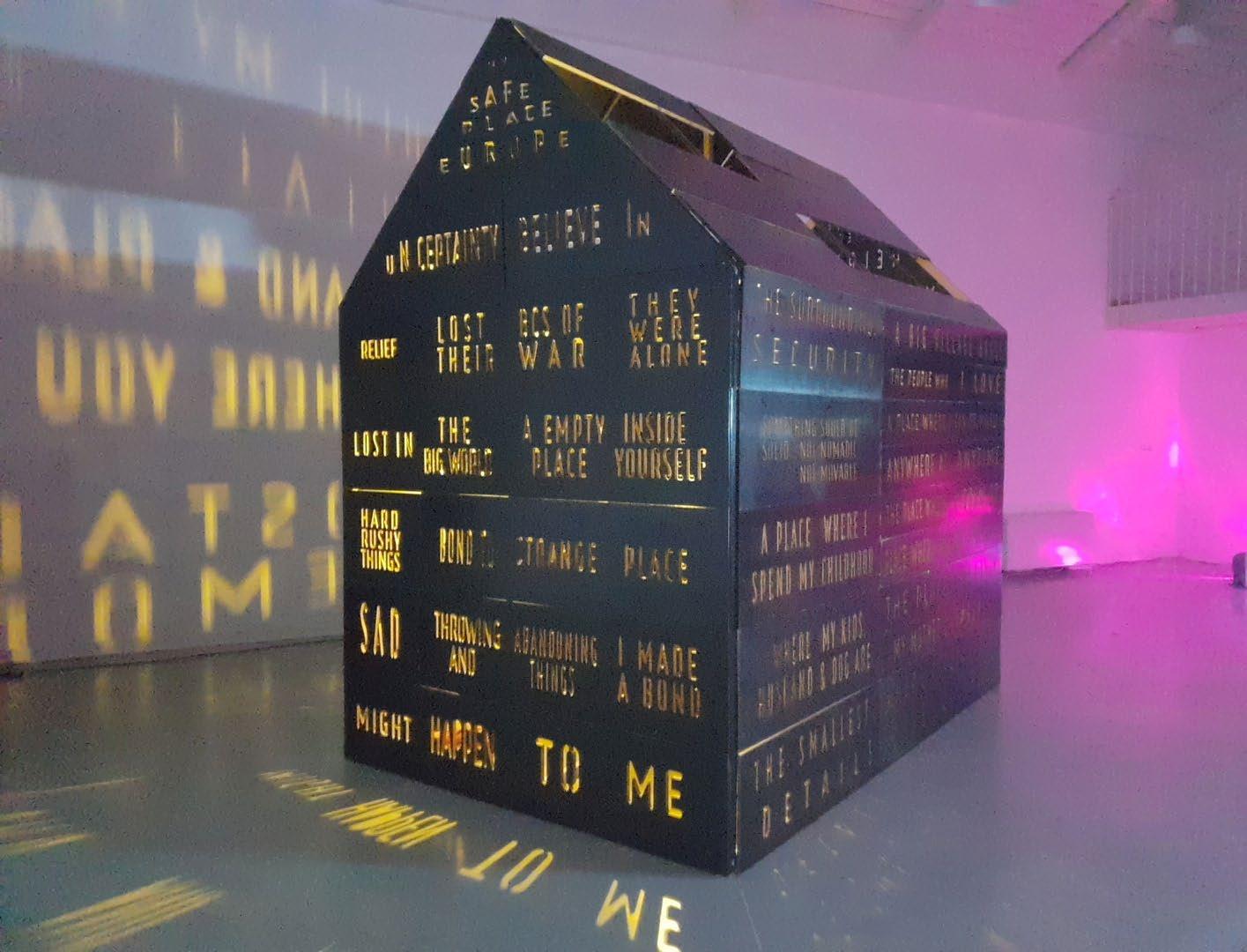
0010
// Dragan Vojvodić, Meaning of Home, Creative District, Novi Sad, 2022 installation
// Farsickness / Homesickness / Homelessness, Creative District, Novi Sad, 2022
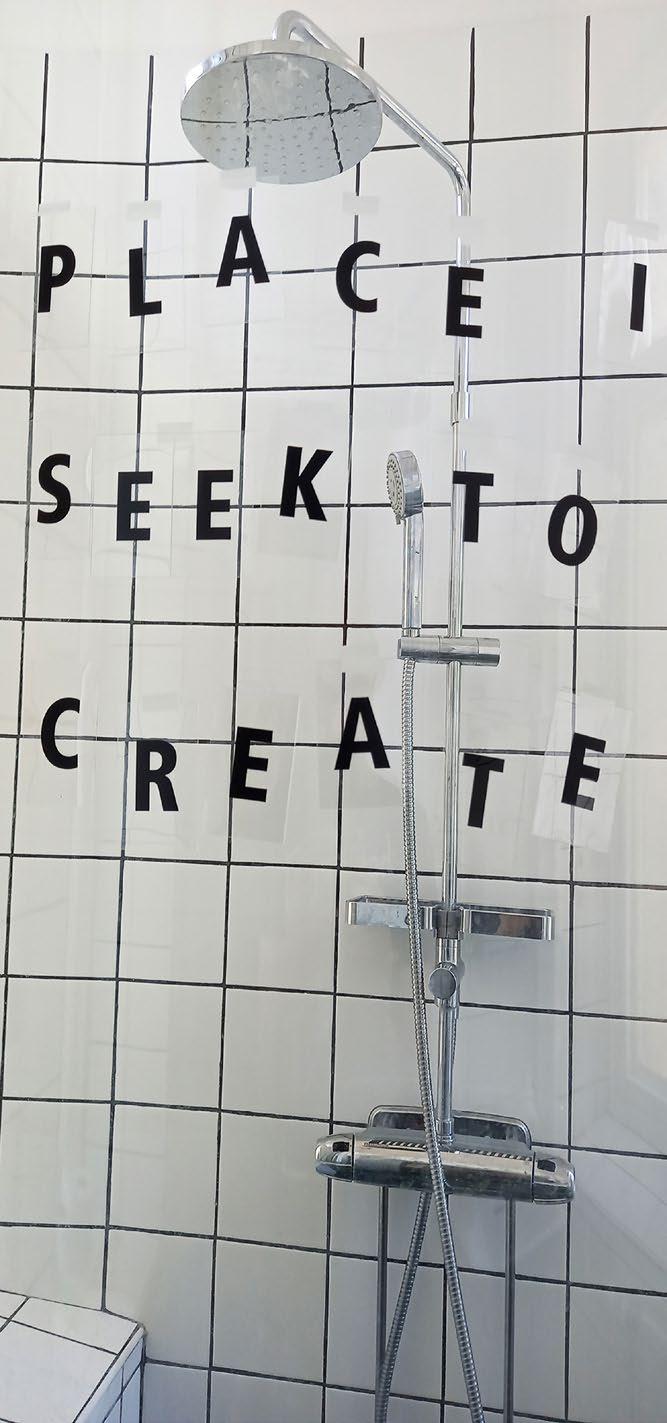

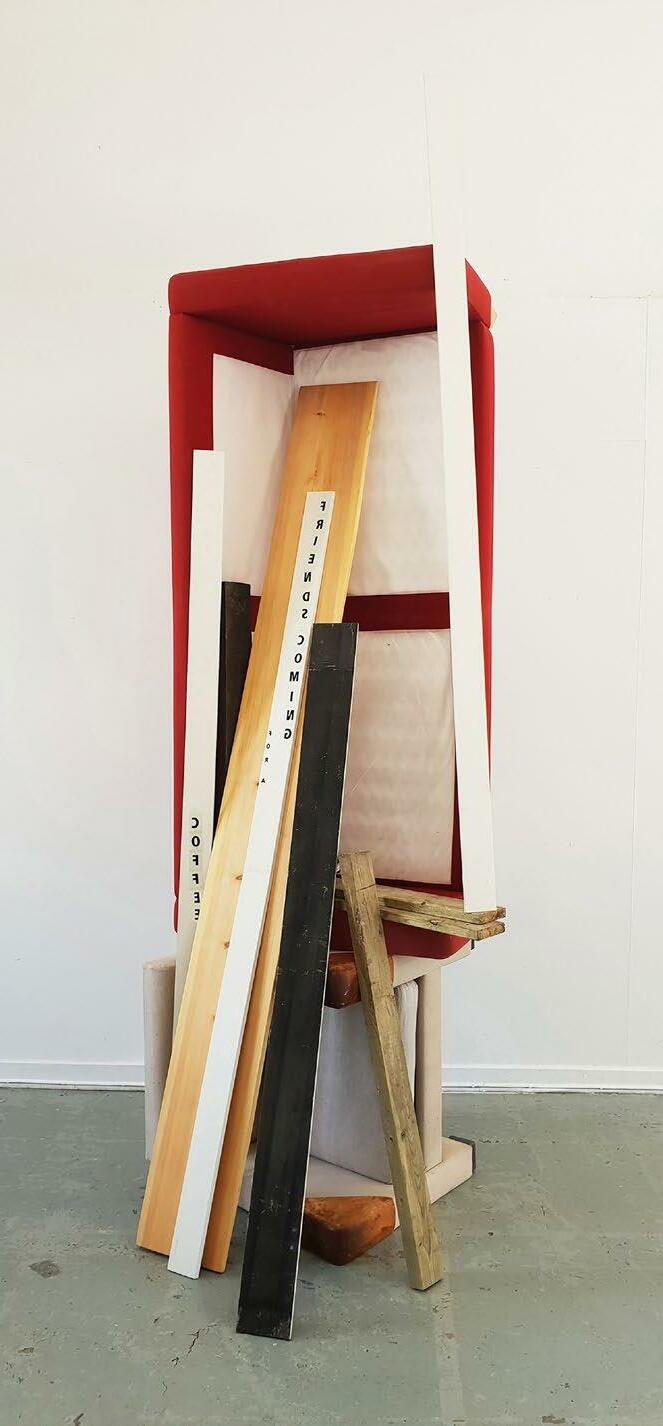 // Dragan Vojvodić, Inventory Konstepidemin, Göteborg 2022 installation // Dragan Vojvodić, Inventory, Konstepidemin, Göteborg 2022 installation
// Dragan Vojvodić, Inventory Konstepidemin, Göteborg 2022 installation // Dragan Vojvodić, Inventory, Konstepidemin, Göteborg 2022 installation
// Dragan Vojvodić, Inventory , Konstepidemin, Göteborg 2022 installation


 // Dragan Vojvodić, Inventory Konstepidemin, Göteborg 2022 installation
// Dragan Vojvodić, Inventory, Konstepidemin, Göteborg 2022 installation
// Dragan Vojvodić, Inventory , Konstepidemin, Göteborg 2022
installation
// Dragan Vojvodić, Inventory Konstepidemin, Göteborg 2022 installation
// Dragan Vojvodić, Inventory, Konstepidemin, Göteborg 2022 installation
// Dragan Vojvodić, Inventory , Konstepidemin, Göteborg 2022
installation
We asked: What does ‘home’ mean to you?
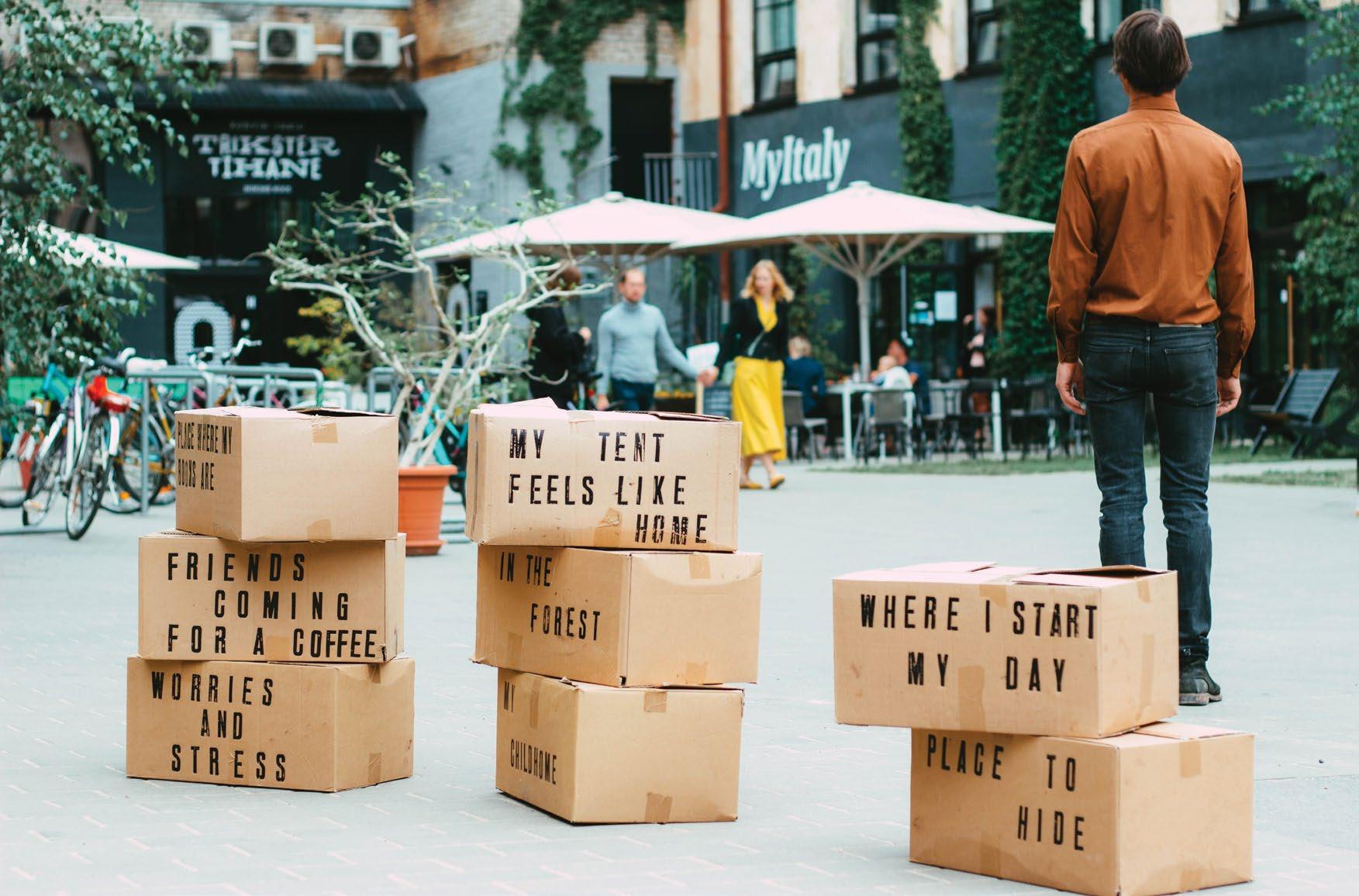
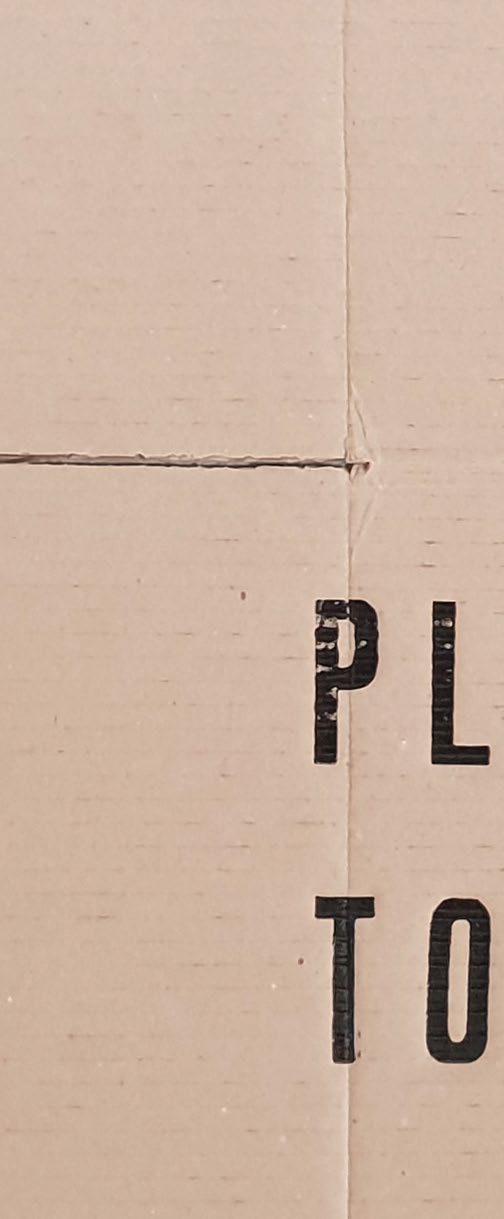
More than 200 survey participants, from Tokyo, Plzeň, Tartu, Reykjavík, etc. responded to our questions.

Home is the place I always return to. Home is the dog that has never let me down. My home is where my nostalgia is. When I see the sea, I know I’m home. My cup of coffee. My bed. My PC. “Home” isn’t just a place. A place I would like to forget. The landscape. The fear of my father. A room of my own. It depends. Relationship. A backpack. A bicycle. Something temporary. Childhood memories. A roof. A nest. Birthplace. Enough space for my books. My cat. A reference point. Friend. A home is a place where I am not stressed. I still haven’t figured it out. Just a place. Days with good people. For me, home is where my mum is. Where you don’t feel lonely. Forme,homeisthehouseIlivein. Where my kids are. Personal space. Homeland. Something I have never had. Dream. Comfortable bed.

// Ljiljana Maletin Vojvodić & Dragan Vojvodić, Meaning of Home , Tartu 2020 performance ©Jelisaveta Džigurski Survey | Ljiljana Maletin Vojvodić & Dragan Vojvodić // Ljiljana Maletin Vojvodić & Dragan Vojvodić, Meaning of Home , Tartu 2020 performance ©Jelisaveta Džigurski
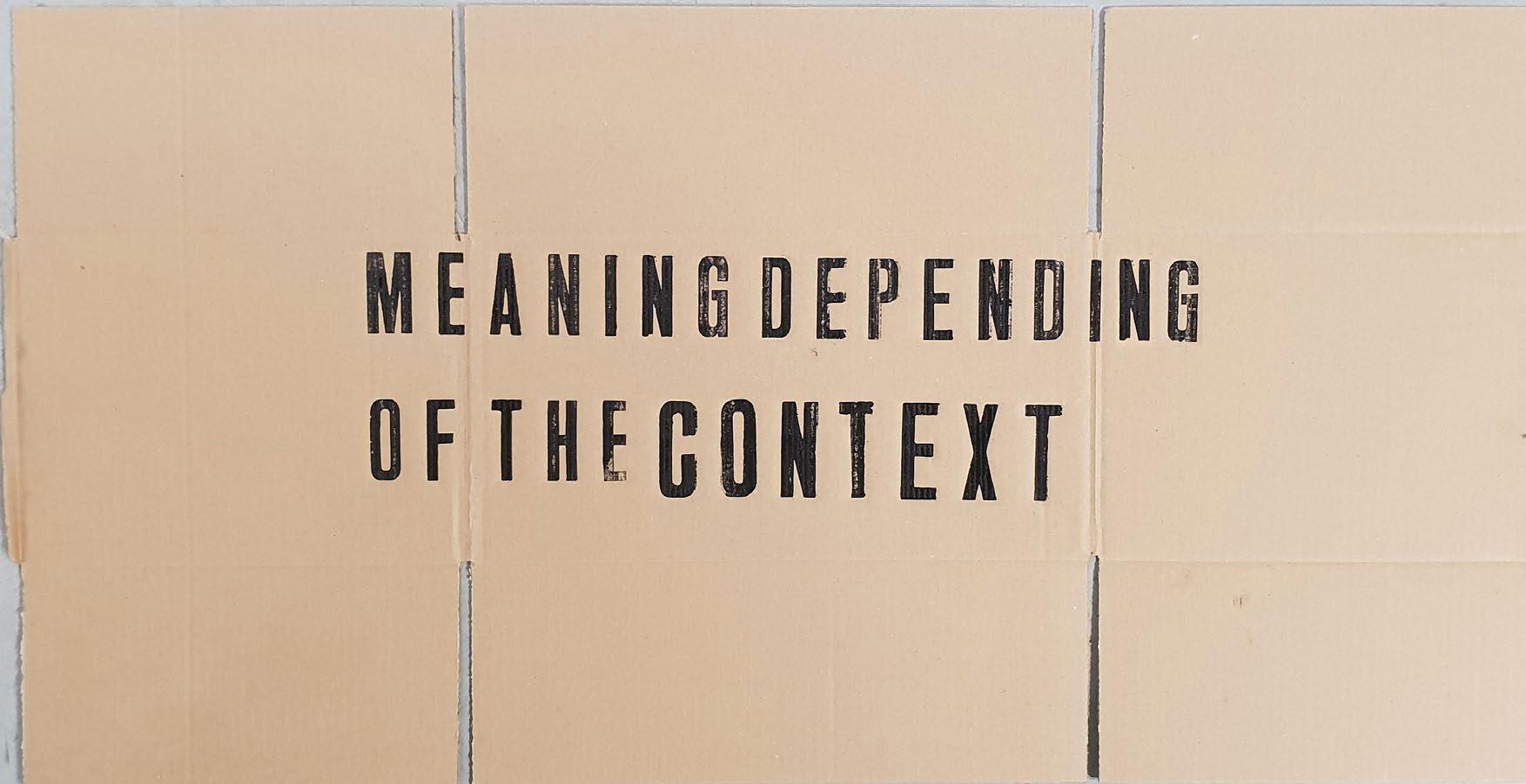
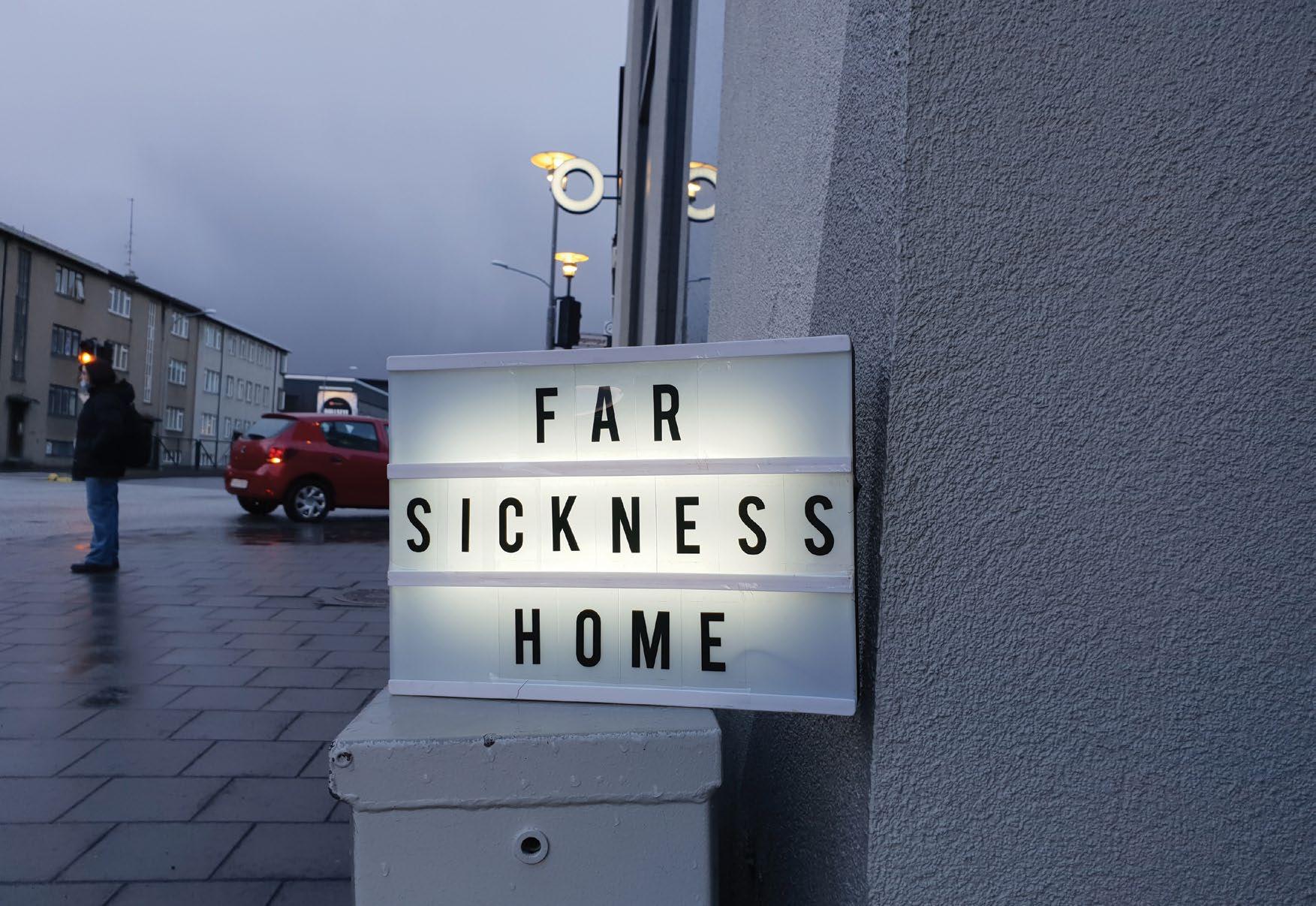

0019
art
installation
// Ljiljana Maletin Vojvodić & Dragan Vojvodić, Meaning of Home, TYPA Printing and Paper Arts Centre, Tartu, 2020
project ©Mana Kaasik // Ljiljana Maletin Vojvodić & Dragan Vojvodić, Farsickness / Homesickness, Reykjavík, 2022
©Ljiljana Maletin Vojvodić // Ljiljana Maletin Vojvodić & Dragan Vojvodić, Place I Seek to Create TYPA Printing and Paper Arts Centre, Tartu 2020 art project

0021
// Ljiljana Maletin Vojvodić & Dragan Vojvodić, Meaning of Home, TYPA Printing and Paper Arts Centre, Tartu, 2020
©Mana Kaasik
Prompted by the project #Meaning of Home, an exhibition and interdisciplinary collaborative project curated and conceived by Ljiljana Maletin Vojvodić and Dragan Vojvodić in Novi Sad, Serbia, artist Anthony Cervino considers the personal connotations, alongside the precarious desires and impermanent comforts of “home” in a new sculptural installation. As a strategy for making art, the concept of “home” dwells within larger themes of family, architecture, nationhood, and the associated feelings of safety, isolation, and desire. Cervino looks quite intimately at these notions in his series of sculptures titled HOMEMADE. Comprised of smallscaled, hand-crafted tables that one might find beside a bed or armchair, each work refers obliquely to various functions of a house (for example, playing, bathing, or sleeping). The collection of objects appears at first as a patchwork of home, but taken together, the installation can be understood as a sculptural montage of different rooms, contexts, identities, and narratives. Because the implied spaces seem to be both spectral and estranged from
a larger dwelling, they are not presented in any kind of functional taxonomy. In other words, they are not isolated specimens, but rather form a more ambiguous community, a misfit family.
The sculptures allude not simply to interior furnishings, but to the more basic needs and desires of what constitutes a home: warmth, shelter, and belonging. For instance, a ring of stones surrounding burnt remains of the picnic-style table top stands in for a hearth, which is defined by its connection to both fire and home. A hearth is understood as the first symbol of civilization – providing necessary light, heat, and cooking – to sustain survival and create culture. In looking at the ashy stones and the charred wood, Cervino leaves only the traces of the fire, a temporal marker of a once-bright, now extinguished flame. Moreover, the horizontal support of one of the legs (recycled from a blue wooden dining chair) is missing, suggesting that the table’s own structure may have been used, almost cannibalistically, as fuel for the fire. With its concurrent functions of nour
ishment and safety, despite the threat of material consumption and destruction, is simply the primary and primal means of making a home.
In another sculpture, tarnished brass legs paired with a patterned top evoke the intimacy of a bedroom. The flowery surface stands in for a quilted bed or ornate wallpaper, but the structure, in step with the other objects, adheres to the form and function of a table. At the center of the configuration, a bright, cherry-red block is also nominally defined as a table, but its proportions discourage easy identification of its purpose. More tellingly, the stickers of butterflies, flowers, and an umbrella, barely perceptible under a topcoat of paint, connote a particular kind of marking or identity. The viewer imagines that a child surreptitiously decorated a surface to make it her own, to claim space. Cervino is clearly aware that home décor often correlates to or indicates its owner’s age, gender, and socio-economic status. And here, the decorative patterns evoke aging femininity, while the stickers recall a young girlishness. But, because of the aesthetic disconnect between surfaces and legs of all the tables, these characteristics of belongings (and the coincident feeling of belonging), Cervino emphasizes a less settled sense of self. This more makeshift or improvised assemblage limits the classification of each sculpture either in terms of a functional form or a consumerist style. The focus instead is on home as an abstracted, dreamlike space. None of the works mock the sentimentality of home, but, like the stickers that seem faded and obscured, the objects convey a home that is both hauntingly present and absent.
An awareness of how the materialism of home manifests as morality, creativity, and character predates Cervino’s installation. In 1840, for instance, Edgar Allan Poe published a short essay titled “Philosophy of Furniture,” where Poe posits his own taste for interior décor, in contrast to various opulent styles he criticizes and identifies by nationality. In describing his preferred room, Poe writes, “There is a pianoforte (rosewood, also), without cover, and thrown open. An octagonal table, formed altogether of the richest goldthreaded marble, is placed near one of the sofas. This is also without cover the drapery of the curtains has been thought sufficient. .... Some light and graceful hanging shelves, with golden edges and crimson silk cords with gold tassels …”8 A viewer might first approach Cervino’s sculptures through this lens of taste and formal aesthetic, whether legs are curved or straight, or if the tables covered with drapery or adorned with trinkets. Poe and Cervino understand the cultural specificity and loaded meanings of seemingly banal domestic objects, and more specifically that they could stand in for status, national identity, and a lived experience.
Inspired by Poe, cultural critic and philosopher Walter Benjamin similarly analyzed bourgeois interiors as part of his larger Arcades Project, a vast collection of reflections on consumerism, advertising, architecture, and popular culture in nineteenthcentury Paris. Here, Benjamin quotes Charles Baudelaire’s introduction to his translation of Poe’s essay,
8 Edgar Allan Poe, “The Philosophy of Furniture,” in The Complete Short Stories (New York: MysteriousPress.com, 2014), 1429. See also Mark Kingwell, “Tables, Chairs, and Other Machines for Thinking” Queen’s Quarterly (Summer 2001): 168187; C.T. Walters, “‘The Philosophy of Furniture’ and Poe’s Aesthetics of Fictional Design,” The Edgar Allan Poe Review 5, no. 1 (2004): 57–79.

0022 0023
“HOMEMADE: Making a Home with Anthony Cervino” | Shannon Egan (Cooperation with the Ejecta Projects, USA)
// Anthony Cervino, Homemade, 2022
installation
©Anthony Cervino
“Who among us, in his idle hours, has not taken a delicious pleasure in constructing for himself, a model apartment, a dream house, a house of dreams?” Benjamin posited his own kind of philosophy of furniture and described the peculiar “physiognomy of homes” and the dreamlike “magic” of thresholds “in the interior of the bourgeois dwelling.” He wrote, “Chairs beside an entrance, photographs flanking a doorway, are fallen household deities, and the violence they must appease grips our hearts even today at each ringing of the doorbell.”9 Following Poe and Benjamin, Cervino’s details of home take on peculiar characteristics and energies; each table seems imbued with personality and performance of the living in and making of a home.10 Ultimately, domestic furnishings form a kind of conceptual framework for understanding the peculiar connection of space and things with psyche and feeling.
Benjamin’s fragments of the home, and the imagined anthropomorphism of things – as chairs become fallen deities – are at once analogous to and updated by Cervino’s uncanny household artifacts. The concept of the “uncanny,” in its application to art is most often associated with Freudian theory, and describes a sense of estrangement or unfamiliarity through a seemingly ordinary, familiar object. Inspired by Freud’s writings, many Surrealists in the 1920s and 1930s took domestic objects as their starting point to tap into the psychic weight of home, particularly in relation to the body. See, for instance, Meret Oppenheim’s Object (1936), a furlined teacup and spoon; Man Ray’s Cadeiu (1921), a flat iron with
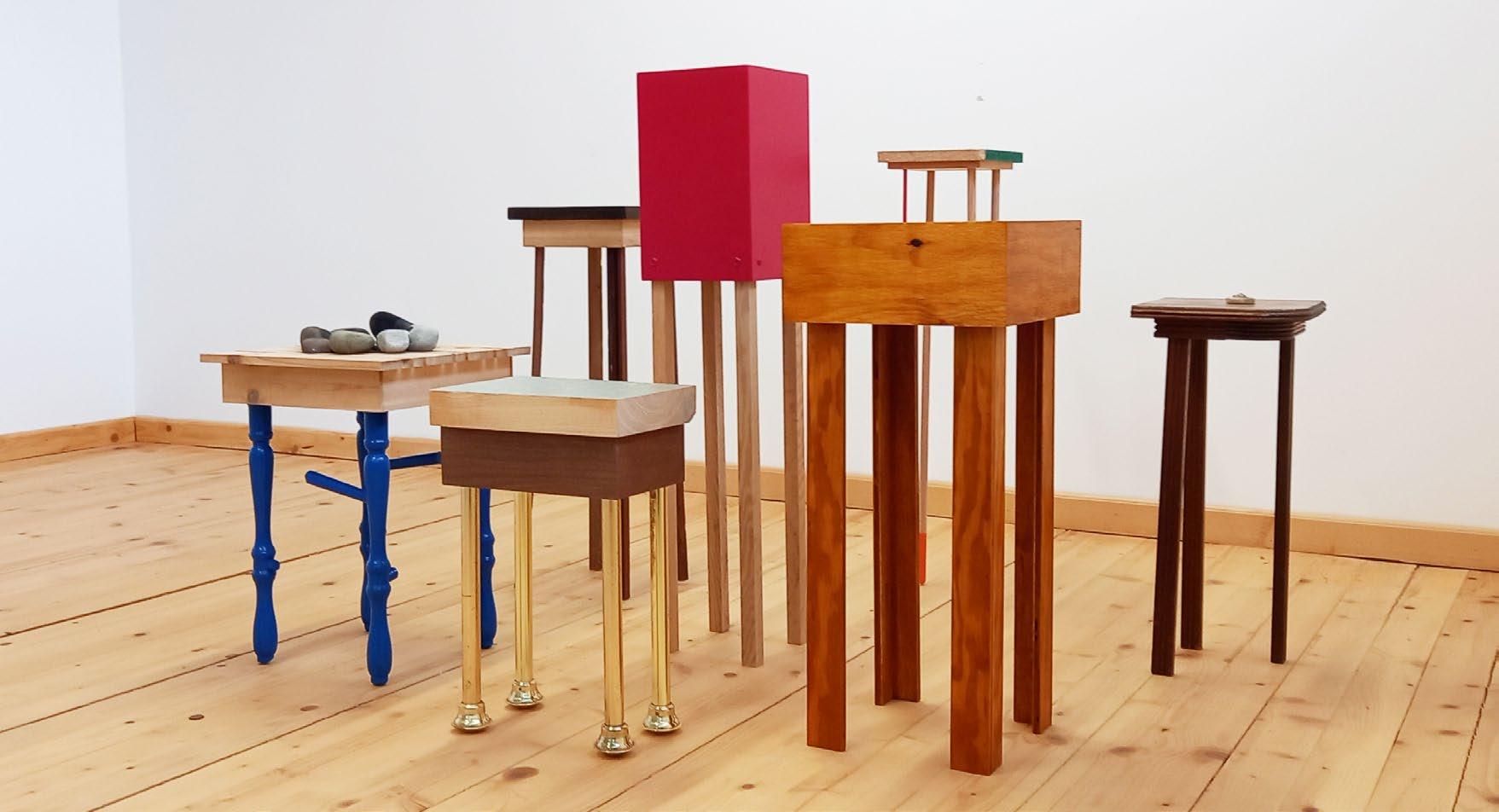
nails; and Salvador Dalí’s Lobster Telephone (1938). Art historian Hal Foster explains, “the uncanny for Freud involves the return of a familiar phenomenon (image or object, person or event) made strange by repression. … Freud traces the estrangement of the familiar that is essential to the uncanny in the very etymology of the German term: unheimlich (uncanny) derives from heimlich (homelike), to which several senses of the word return.”11 For Cervino, the uncanny is embedded deeply within this relation to home; the objects in HOMEMADE dwell exclusively in an unheimlich home.
With the ghost of another early 20thcentury arthistorical precedent in mind, Cervino places a worn drain stopper on a wobbly waterstained table and suggests the daily ablutions of a bathroom. This found bathroom device conjures Marcel Duchamp’s Fountain (1917), the urreadymade and arguably most impactful urinal. But, seen within an arthistorical lineage, Cervino’s work is also is in dialogue with contemporary artist Robert Gober. Also following Duchamp, Gober created urinals, sinks, and Drains (1990), handmade sculptures that appear identical to their massproduced, ordinary counterparts and are placed incongruously on gallery walls. Gober’s sculpture conjures what art historian David Joselit has called “the poetics of the drain,” and Helen Molesworth identifies as a recurrent motif in his oeuvre that functions in relation to a nuanced evocation of bodies and identity.12 Whereas a drain’s function is to ensure liquid passes from one place to another, with both location and temporality in mind, a plug for a washbasin facilitates constancy
9 Walter Benjamin, he Arcades Project, trans. Howard Eiland and Kevin McLaughlin (Cambridge, Massachusetts and London: The Belknao Press of Harvard University Press, 1999), 214.
10 In his short story “The Devil in the Belfry,” Poe describes an armchair with “crooked legs and puppy dog feet,” and C.T. Walters aptly identifies that “The chair … is not merely a chair. Instead it becomes a throne that declares masculine power and the righteousness of an ordered world.” Walters, 60.
11 Hal Foster, Compulsive Beauty (Cambridge, Massachusetts and London: The MIT Press, 1995), 7.
12 David Joselit, “Poetics of the Drain,” Art in America 85, no. 12 (December 1997): 6470; Helen Molesworth, “Stops and Starts,” October 92 (Spring 2000): 157162.
and complacency. Because it is a stopper, Cervino’s sculpture, with its traces of age, wear, and water, stands in for home as a place of rest and stillness.
Obscured by a pebbled plastic surface in another table is a found decorative plate of Annie, from the popular theatrical musical of the same name. As an object, this plate is a signifier of late 20thcentury massproduced American domestic kitsch. But, as an orphan, Annie suggests a desperate longing for a home. Central to Cervino’s other recent works, these found decorative plates are stacked, knapped into arrowheadlike forms, and carefully organized in and amongst other sculptural forms and boxes. This plate is hauntingly effaced, its referent barely legible. Here, the object reveals a particular sociohistorical moment, but the sentiment endures.
Perhaps the most provocative motif in the collection of objects is the cross carved into the wooden surface. A remnant of a church pew, this ecclesiastical furnishing may be a nod to the Catholicism of Cervino’s early childhood or to the belief that the church is the House of God. As someone who understands, but does not necessarily have faith in this nonsecular symbolism, the cross on this table elicits prayerful, if not religious questions: not simply, if God is the Father, but where is father? Or, more broadly, what is the place of morality or spirituality in this home, and how do such beliefs affect the rearing of children?
Cervino’s works cannot be understood merely as a mimetic artifacts or remnants of a house. Rather, taken together, the objects are allegories for the emotional, financial, and nostalgic complexities of home. Seen as makeshift altars or foraged furniture, the tables appear simultaneously ritualistic and banal. And, because they are cobbled together from disparate parts, the objects seem to strive, akin to the dogged optimism of Annie, toward a semblance of stability. The title of this series HOMEMADE denotes an artistic process, a crafting by hand rather than machine, but it also questions the gendered inequities, class politics, and universal sentiments of “homemaking.”
0024 0025
// Anthony Cervino, Homemade , Creative District, Novi Sad, 2022 installation
// Anthony Cervino, Homemade 2022 installation ©Anthony Cervino
installation ©Anthony Cervino
// Anthony Cervino, Homemade , 2022
// Anthony Cervino, Homemade 2022 installation ©Anthony Cervino
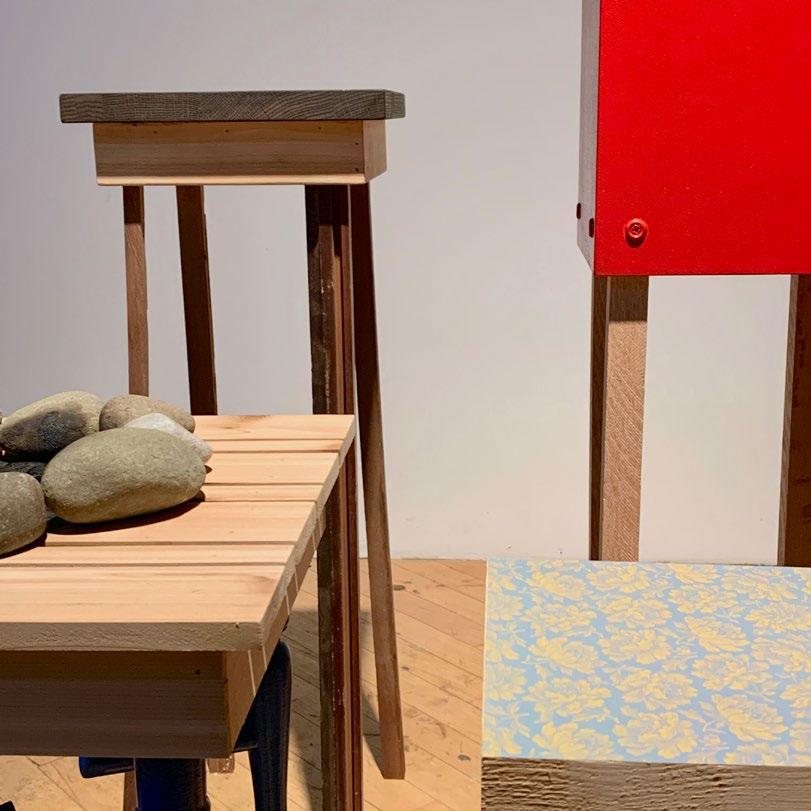

installation ©Anthony Cervino

// Anthony Cervino, Homemade , 2022

Addendum: On Home
Shannon Egan and Anthony Cervino want to thank Ljiljana Maletin Vojvodić and Dragan Vojvodić for recognizing the centrality of “home” to our collaborative curatorial and artistic practice.
As husband and wife, artist and art historian, father and mother to two daughters, Cervino and Egan work intimately at the intersection of individual disciplines, while also blurring the lines between home and work. Since 2018, Cervino and Egan have been co-directing an art gallery called Ejecta Projects. The idea for the gallery was born from a co-curated exhibition and co-written art book titled Ejecta (2015), which was broadly a reflection on parenthood, aging, marriage, and professional successes and failures.
We decided on the title “ejecta” – first, for the exhibition and later, for the gallery – as it refers, mostly in geological contexts, to the matter thrown from explosive events surrounding volcanic eruptions or meteor impacts. This term struck us as an apt metaphor for an active studio practice. During process-driven art investigations, the collateral creative detritus – the ejecta – often is as revealing and significant as the object of determined making. Despite the outward driven connota
tions of this term and our public-facing mission of the gallery, the making of a very personal home/gallery/studio is central to all our creative and curatorial endeavors.
The sculptures in HOMEMADE are similar in both form and theme to the work of Ejecta, insofar as the earlier exhibition included domestic objects, furniture, and even a hanging “double house” sculpture, Cervino’s Archimorph (Duplex). As Cervino continues to consider how material things trigger memories and long-lost narratives in his work, Ejecta Projects remains our primary platform, a hearth, for our coming together as partners and parents. Moreover, the first furniture we placed in the gallery was a long table Cervino designed and built, a space for working and gathering artists, family, and friends. Ultimately, the gallery is envisioned as extension of our professional practices and personal commitments to art, community, and a multifaceted notion of home. Ejecta Projects does not just allude to our previous collaborative efforts, but also serves an incubator – a home – for new undertakings.
Artist Anthony Cervino and art historian Shannon Egan curate contemporary exhibitions collaboratively under the moniker Ejecta Projects. Their curatorial work is realized in a space located in Carlisle, Pennsylvania, USA. Founded in 2018, Ejecta Projects is a small art gallery, a curatorial workshop, and an opportunity to engage with community.
Anthony Cervino is an artist-educator who has exhibited his work professionally for over 20 years. He is Professor of Art at Dickinson College, where he has taught sculpture since 2006. Cervino studied art at the University of North Carolina at Chapel Hill and Towson University. His sculptures have been included in recent exhibitions at The Gallery at Flashpoint in Washington, DC, the Institute of Contemporary Art at the Maine College of Art, the Indianapolis Museum of Contemporary Art, The Arlington Arts Center, the Minneapolis College of Art and Design, and the Susquehanna Museum of Art, among others.
Shannon Egan received her BA from the University of North Carolina at Chapel Hill, and her MA and PhD in the History of Art from Johns Hopkins University. She currently is Director of the Schmucker Art Gallery at Gettysburg College, where she curates exhibitions of contemporary and historical art and teaches courses in art history. With Marthe Tolnes Fjellestad, she is the co-editor and co-curator of the book and traveling exhibition titled Across the West and Toward the North: Norwegian and American Landscape Photography (University of Utah Press, 2022).
Homesickness / Reconstruction – Betula Nostalgia | Nils Ramhøj
Outdoor installation by the Swedish artist Nils Ramhøj, Sculpture in Pilane –contemporary sculpture in a prehistoric landscape13. ”Working in the Bohuslän mountains, I returned felled birch trees to the site where they had been growing, enabling a form of regeneration. But can nature be reconstructed without losing its natural state? From this standpoint, I raise questions about exile and returning, about our longing for identity, for ourselves – the emotion known as nostalgia or more simply put, homesickness. Something has stirred in the Pilane hills. A gap has emerged, revealing an amputation of sorts, endured by the returning trees. The place has changed. The returned trees have been reduced to amputated trunks with lost branches, now hovering over the ground. This was made possible by four visible metal sticks under each tree. But is it possible to take root again?”
Nils Ramhøj articulates multiple combinations of painting, drawing, photography as well as installation and performance. His art often includes cooperation with other artists within theater, dance, music, literature and film. In his artwork Ramhøj shows his interest in human conditions, both individual and collective, including religion and politics. The outdoor installation Reconstruction − Betula Nostalgia
13 Pilane in Klövdal, Bohuslän, Sweden, is an Iron Age settlement site and grave field dated to 1600 AD. In the summer of 2007, the Pilane site started to be used for a seasonal outdoor sculpture exhibition: Skulptur i Pilane (Sculpture in Pilane)
0028 0029
focused on human vulnerability exposed to trends of nationalism, together with cynical mechanisms at work in our society’s avid market economy. Ramhøj lives and works in Gothenburg (Sweden) but has also been active as an artist in Spain and Mexico. His work has been exhibited both nationally and internationally.

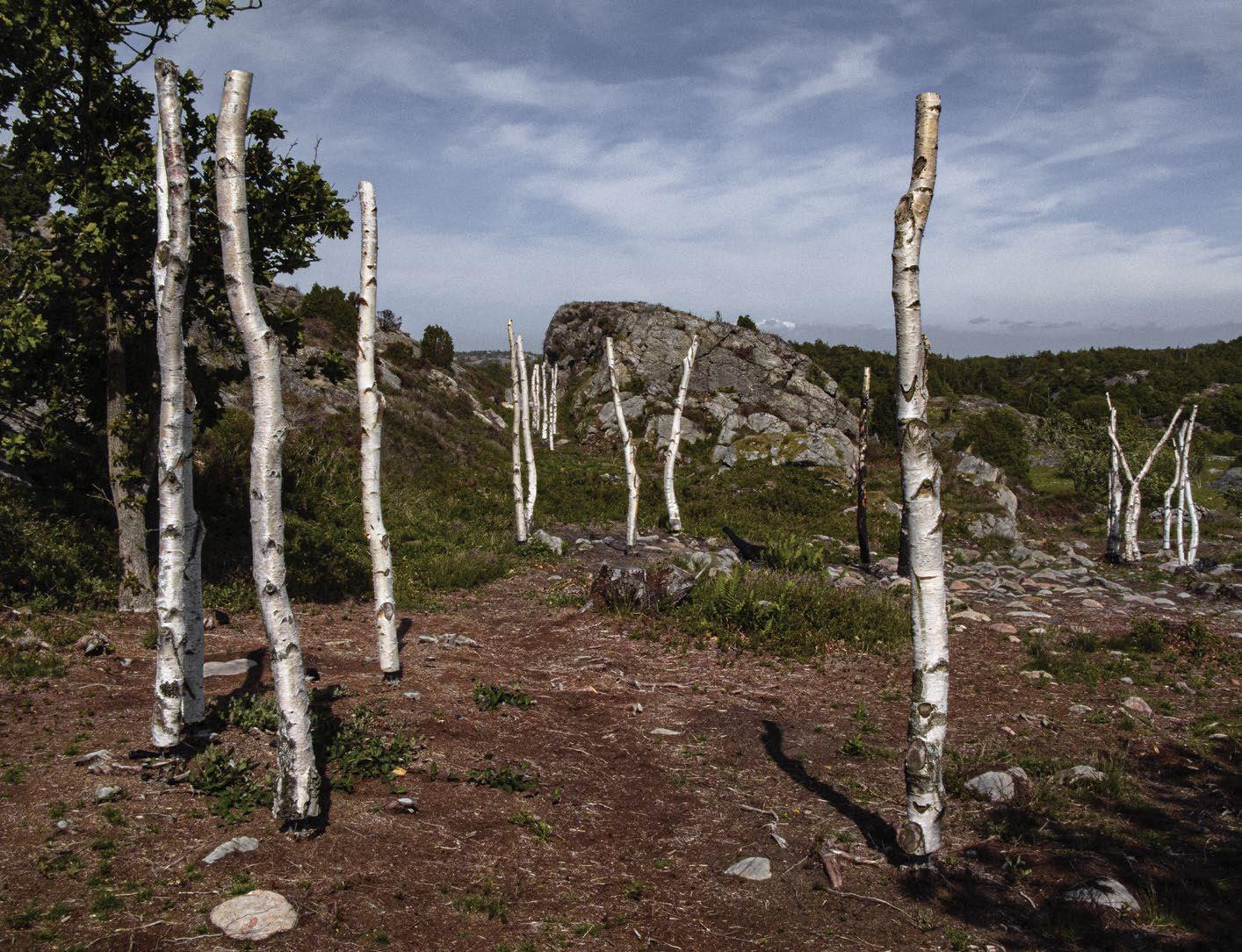

// Nils Ramhøj, Reconstruction –Betula Nostalgia , Bohuslän, 2011 installation ©Nils Ramhøj // Nils Ramhøj, Serbian Cousins, Creative District, Novi Sad, 2022 installation ©Nils Ramhøj // Nils Ramhøj, Reconstruction –Betula Nostalgia , Bohuslän, 2011 installation ©Mia Albertsson
“In the early 2000s, Rio Tinto discovered a mineral in Serbia’s Jadar valley which came to be known as “Jadarite“. Rio Tinto touts it as “one of the most significant lithium deposits in the world”. “The Jadar project” is said to threaten more than 15,000 agricultural households in the town of Loznica and the Krupanj municipality, and the health and well-being of the communities of Loznica, Šabac, and Valjevo. Households that sit directly on the proposed site of the mine face expropriation if they do not sell their land. After a series of protests, the Government of Serbia formally halted Rio Tinto’s „Jadar lithium” project on January 20. However, environmentalists now reiterated that the activity continued. After visiting abandoned villages Gornje Nedeljice / Brezjak we display the appropriated Sign Boards (Danger. Private Property. No trespassing. Violators will be prosecuted) in a gallery with a few elements from a local construction site (gentrified area), creating a ready-made situation with a very clear and precise reference to the locality from which they were taken.”

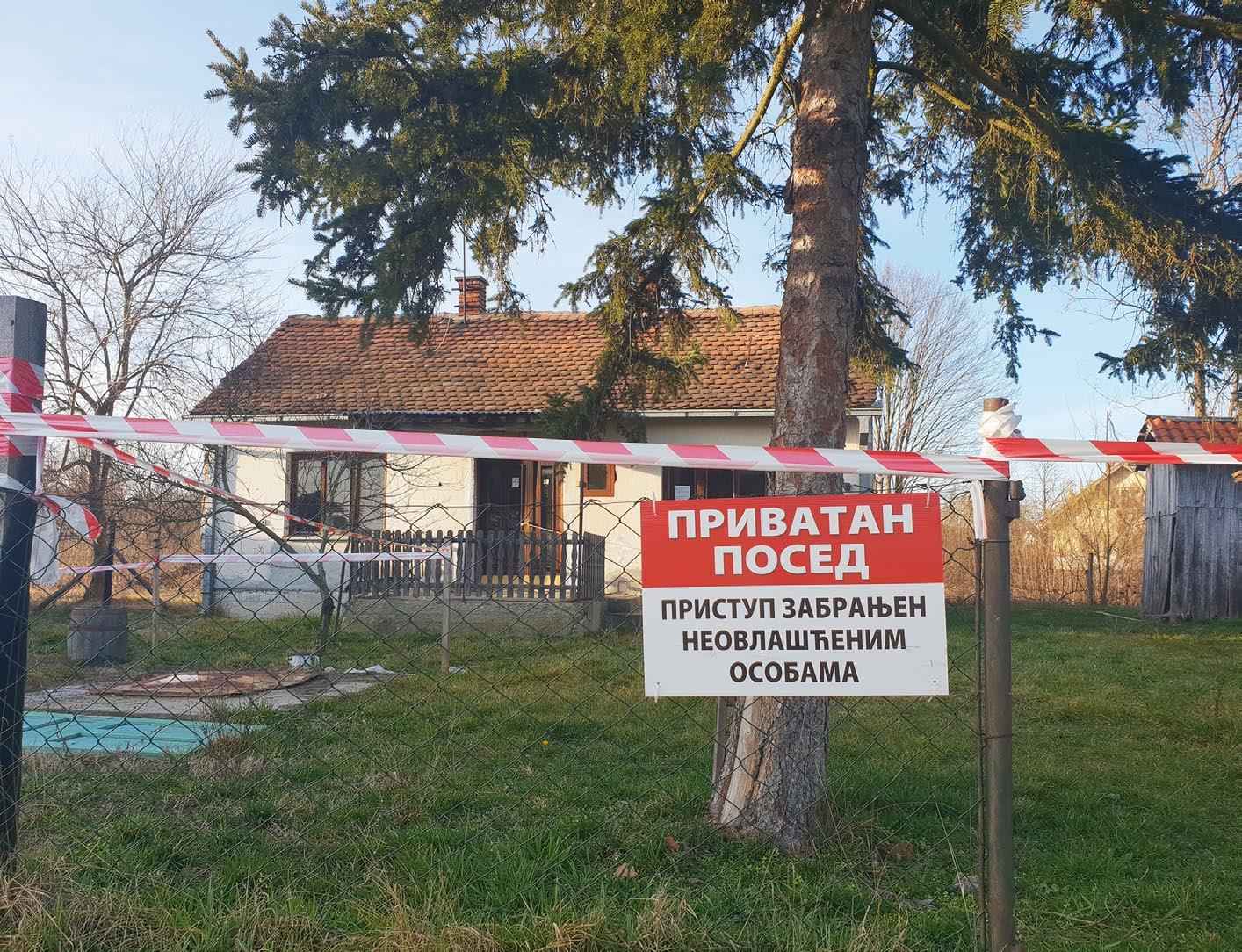
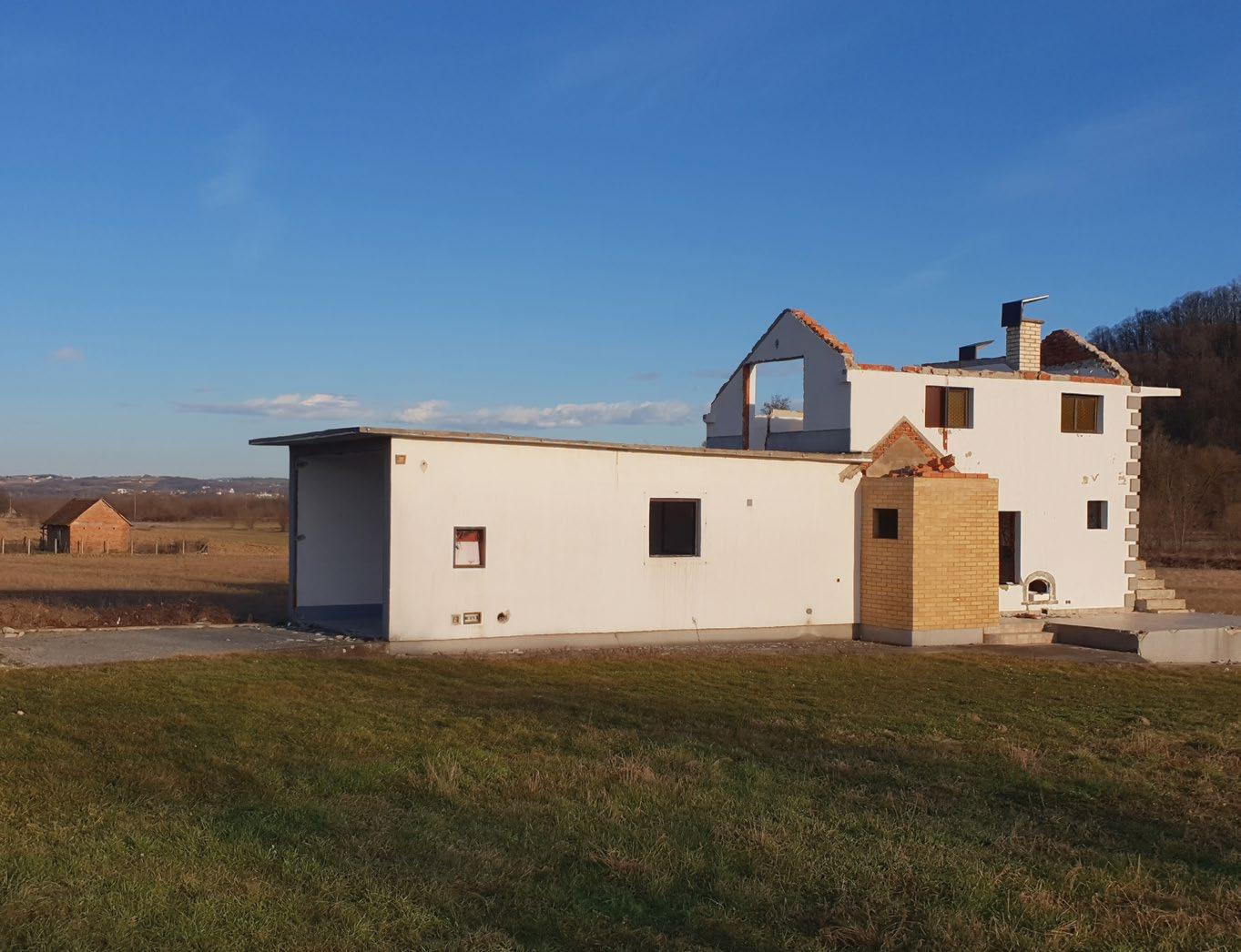 Relocation / Expropriation / Gornje Nedeljice, Brezjak | Ljiljana Maletin Vojvodić & Dragan Vojvodić (installation, photographies)
Relocation / Expropriation / Gornje Nedeljice, Brezjak | Ljiljana Maletin Vojvodić & Dragan Vojvodić (installation, photographies)
// Ljiljana Maletin & Dragan Vojvodić, Relocation / Expropriation , Gornje Nedeljice, Brezjak, 2022 photography ©Ljiljana Maletin Vojvodić // Ljiljana Maletin & Dragan Vojvodić, Relocation / Expropriation , Gornje Nedeljice, Brezjak, 2022 photography ©Ljiljana Maletin Vojvodić // Dragan Vojvodić & Ljiljana Maletin Vojvodić, Relocation / Expropriation, Creative District, Novi Sad, 2022 installation
Self-Sustainable System of Absurdity
| Stevan Kojić (installation)
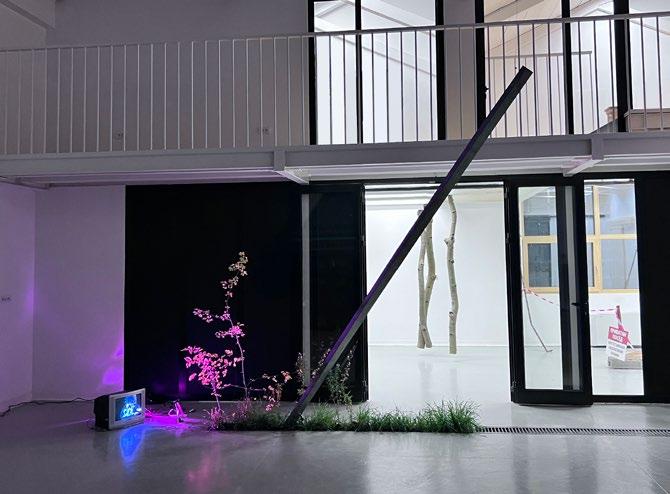
“Self-Sustainable System of Absurdity is an independent, autonomous construct, but at the same time an experimental model for exploring potential interactions. The environment is constructed from passive and active subjects, electronics and plants connected by sensors and computers, elements that become a kind of interface for communication. Self-Sustainable System of Absurdity considers the discourse of utopian/dystopian micro-communities based on the symbiosis of man, nature and technology.”
Stevan Kojić graduated and mastered at the Faculty of Fine Arts in Belgrade. He completed his doctoral studies at the Academy of Arts in Novi Sad, where he is employed as a full professor at the Department of New Media Art. Through his artistic practice, he explores the relationships between society, technology, science and nature.

0034 0035
// Stevan Kojić, Self-sustainable System of Absurdity , Creative District, Novi Sad, 2022
installation ©Stevan Kojić
Climate change Hyperobject_Fukushima 2019 | Dragan Vojvodić & Dejan Ilić
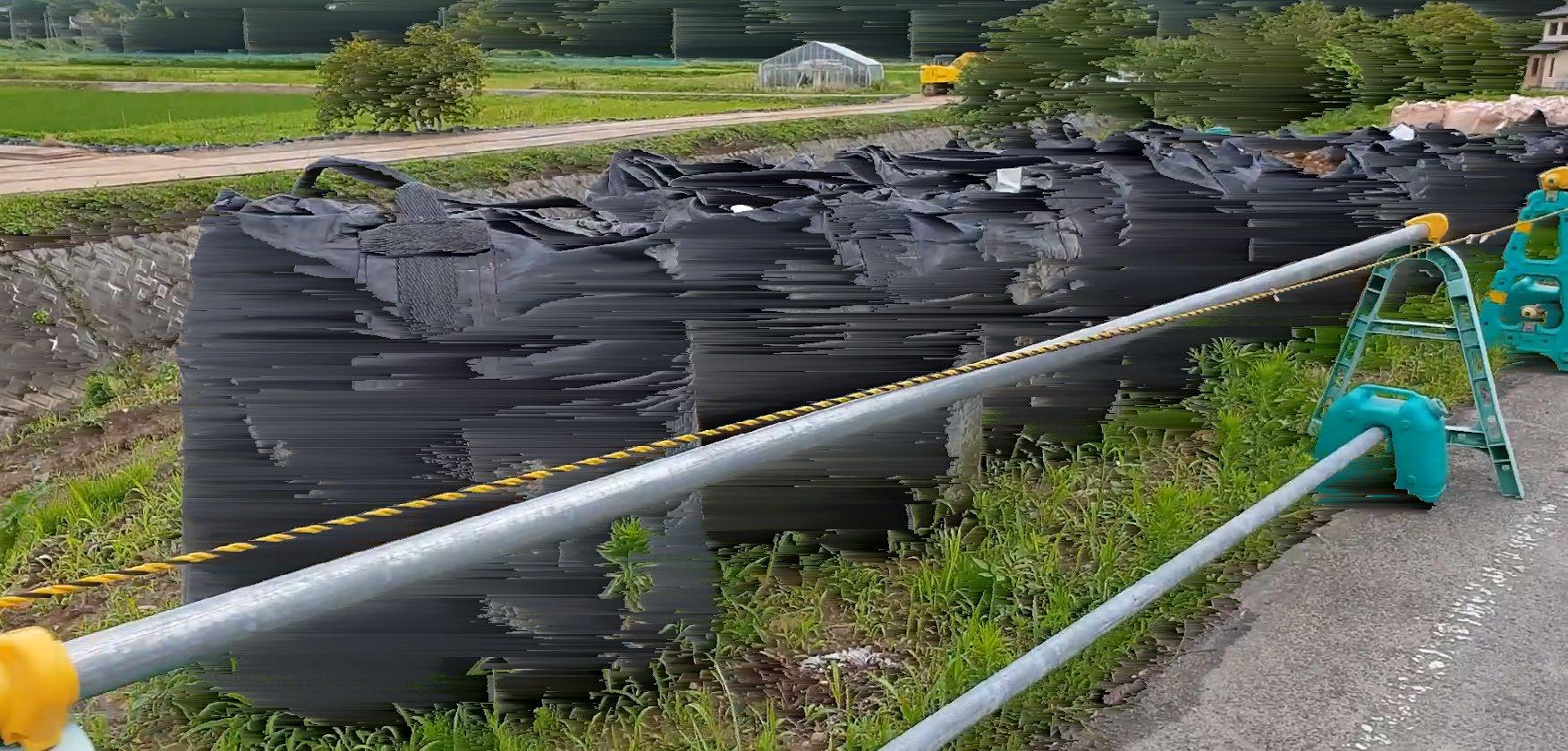
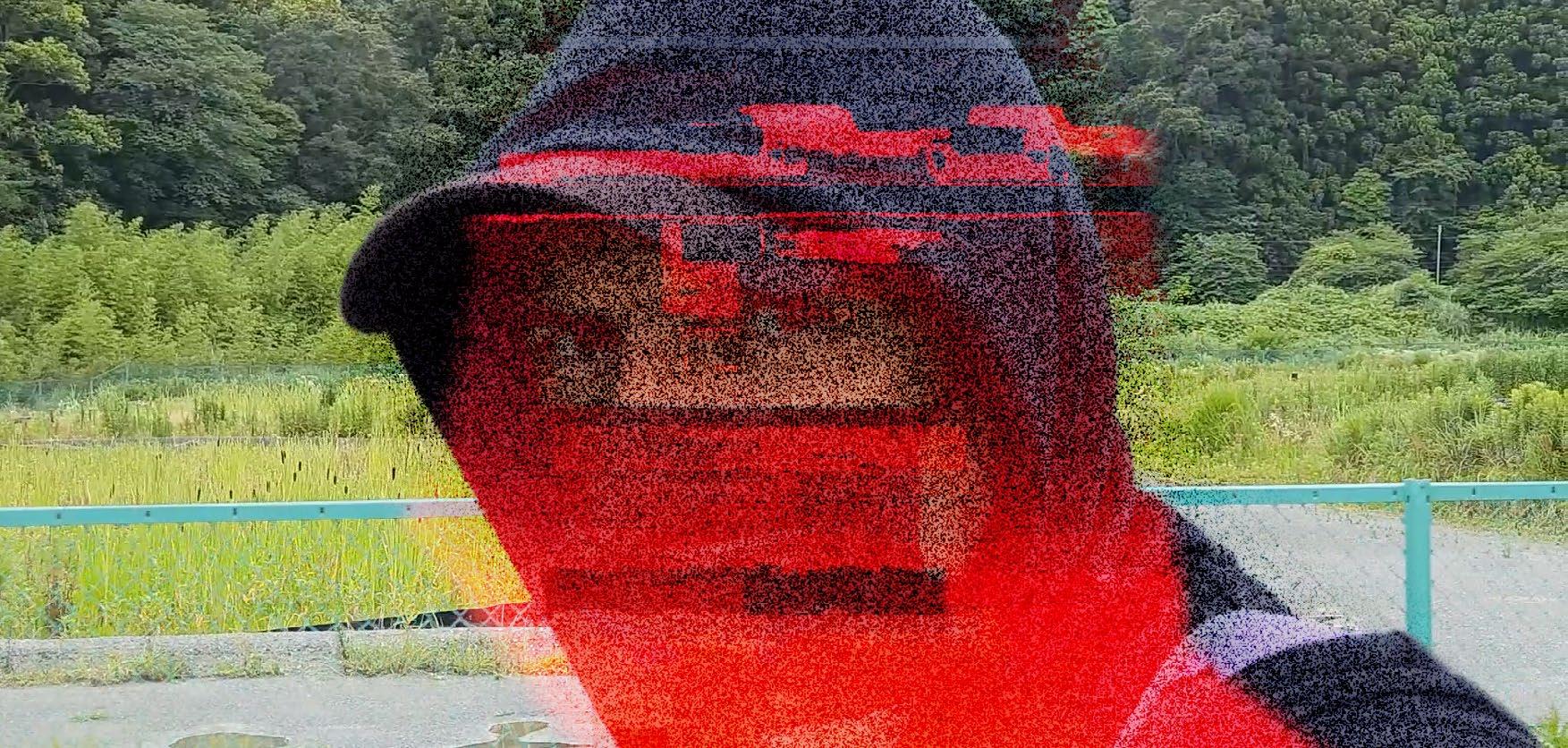
“Fukushima accident, also called Fukushima Daiichi nuclear accident in 2011 at the Fukushima Daiichi (Number One) plant in northern Japan, is the second worst nuclear accident in the history of nuclear power generation. TEPCO officials reported that tsunami waves generated by the main shock of the Japan earthquake on March 11, 2011, damaged the backup generators at the Fukushima Daiichi plant. In the days that followed, some 47,000 residents left their homes, many people in areas adjacent to the 20-km evacuation warning zone also prepared to leave, and workers at the plant made several attempts to cool the reactors using truck-mounted water cannons and water dropped from helicopters. Eight years after the Fukushima nuclear accident I go to the Fukushima area to document the situation I had previously seen on Google Maps. Namely, in the years after the disaster, about 70,000 workers removed topsoil, tree branches, grass and other contaminated material from areas near homes, schools and public buildings to reduce radiation to levels that would enable tens of thousands of evacuees to return home. The decontamination operation cleaned generated millions of cubic metres of radioactive soil, packed into in the 1-cubic-meter bags that carpet large swaths of Fukushima prefecture. The number of bags of waste from decontamination efforts around the stricken Fukushima No. 1 nuclear plant reached a little under 9.16 million according to Fukushima Prefecture and the Environment Ministry. One of many problems is what to do with the massive amount of contaminated soil from the site in a growing pile of bags stacked on former farms in Fukushima. The basic idea of the work Hyperobject_Fukushima was documentation of the fields covered with toxic bags. However, the vast majority of the bags had already been removed. In the end, I just documented my own journey from Kyoto to a specific location 8 kilometers away from the Daichi Nuclear Power Plant, staying at the location and returning to Kyoto, all in one day traveling by a Shinkansen bullet train. In this way, I collected a lot of video material, which would be great for a longer documentary film, which I don’t rule out, but in the end, I decided to create a shorter video work of a certain drama based on specific editing and audiovisual effects with the help of artist Dejan Ilić who did the editing, visual effects, and sound.”

0037
// Dragan Vojvodić & Dejan Ilić, Hyperobject_Fukushima 2019, 2022 video
video
|
Black Carbon
Virtual.Unit creative VR lab (Maja Budžarov, Predrag Šiđanin, Luka Tilinger) VR work
“An ecological catastrophe. Everything is black carbon. Is that all? There it is, a single plant fights and survives successfully… Which plant is it? How did it survive? Let’s see here, let’s get closer to it… However, it runs away … Runs away from me, away from the human, runs away to survive… Will it? Or maybe the plant that resists, that flees, is a symbol of life? The elixir of life? Hope for the future? Demonstration of the power of nature, survival … I am a being that has also survived the ecological catastrophe, which tries to attract the eluding tree, I am Übermensch, above death, above every devastation and catastrophe. Can we work together to rebuild the world that technology has destroyed? I try to approach the tree that is distrustfully fleeing, to cultivate and make our common future better.”
Virtual.Unit creative VR lab is an informal group founded in July 2020 by people who deal with new media art and science in the domain of virtual reality (VR). The goal is to create original VR works in the field of art and science. Their works were presented at exhibitions and international festivals of new media arts and scientific conferences (ISEA, MACBA, Barcelona, Spain, 2022; ADAF, Athens, Greece, 2022; MFRU, Maribor, Slovenia, 2021; Creativity and innovations, Belgrade, 2021) VR works are publicly available, to all who use Oculus Quest HMD sets, through the Oculus App Lab, and can also be downloaded directly from: www.virtualunit.org

0038 0039
// Virtual.Unit creative Lab, Black Carbon , 2022 VR project
Through Forigner’s Eyes | Izabella Eck TARTU 2024
About the project:
”Jaan Ulst, the Programme Line Manager for the European capital of culture at Tartu 2024, gave me this task. Since it was the first time I had worked on a project like this, I was thrilled to have been given this opportunity. The fact that my volunteer program is coming to an end led me to think of this project as a fitting summary of my time spent here. The photographer, Nima Sarabi from Teheran, who also volunteers for Tartu 2024, and I have had a great collaboration since the very begining and I appreciate that he found time for this despite working a fulltime job. Tartu is famous for its university and international student life and the diversity of this group also demonstrates that you can meet people from all over the world here. I interviewed 11 people from 11 countries and from 3 continents. The participants were volunteers from different organisations in Tartu and university students. My main goal was to find out why each person decided to study or work in another country and why did they choose specifically Estonia and Tartu. Nima and I met everyone at their favourite place in Tartu. That’s how the photos were made. It was the right chance to discuss why that location is special to them, and we got a glimpse into their daily lives, which greatly enhanced the personal aspect of this project. It was interesting to me that, even if everyone had their own story, that they all emphasised how this experience changes a person’s ability to understand and accept people with different backgrounds and cultures. My primary responsibilities for my volunteer work in the division of communication and marketing
were event planning and creative writing. I joined the department of international relations, where I was in charge of managing media coverage of various delegations that came to visit the organization Tartu 2024. I am a student at Budapest Business School, Faculty of Commerce, Hospitality and Tourism. I am currently writing my master’s thesis on volunteer tourism. During university, I was a member of an organization where we represented the students’ interests and rights. Also, we helped them with their study issues.” (Izabella Eck)
Participants:
Lisa Shimmi, Japan, Nagasaki, 52 years old, volunteer and student // Her favourite place in Tartu is along the Emajõgi river which has a unique view during each season.

“The water flows like a life mixing both happiness and sadness under the surface, and the gentle flow never stops. The view of the river is so relaxing and calming.”
She moved here 2 years ago because of family reasons; her husband is a professor at the University of Tartu. She gets inspired by meeting people from many countries, learning their cultures and their perspective. Building friendships internationally helps the world become more peaceful. She has studied, volunteered, and worked in Japan, New Zealand, the USA, Finland, and Estonia. Volunteering and studying are her calling in life that offers her deeper insights.
“Through travelling and communicating

0040
Tartu
// Lisa Shimmi Sarabi
©Nima Sarabi ©Nima
// Enlik Tjioe
//
with people from all around the world and experiencing the cultures, people can grow more empathy, humanity and be more conscience to realize that we are all the same human beings. In the digital communication era, people may misunderstand others due to prejudice and speculation, and some may not treat people well, especially online. The benefit that young people have is to see if their understanding of other cultures is correct. Not only find inspiration from other cultures, but also to appreciate their own culture when they go abroad.”
Enlik Tjioe, Indonesia, Jakarta, 31 years old, volunteer //
His favourite place is the library at the University of Tartu, which helped him a lot during his studies. The atmosphere inside made him always eager to learn something and finish his master’s thesis. He has been living in Tartu for more than 3 years now. He came here to study and explore himself by living and working in Estonia and in Europe in general. Volunteering gave him the broad experience to learn not only something that he already knew but also something that he had an interest in and really wanted to learn. Making new friends and helping people through volunteering also gave him genuine happiness.
“Travelling gives people the chance to explore different cultures while getting to know themselves in a more profound way. It helps you become the best version of yourself and changes you for the better.”
Müşerref Özhan, Turkey, Van, 28 years old, volunteer //
Her favourite place is the library Fahrenheit 451 because it has a warm and mystic atmosphere. She loves reading books, and that place gives her peace. She has been living in Tartu for 9 months and she chose it because she likes being surrounded by people from all around the world and it is well-known that Tartu is a popular place for foreigners. It is a cosy city which makes it perfect for a person who prefers smaller places as opposed to big cities. She believes that volunteering or pursuing education abroad is an amazing experience because it helps people to get to know new countries and cultures and broaden their perspectives.
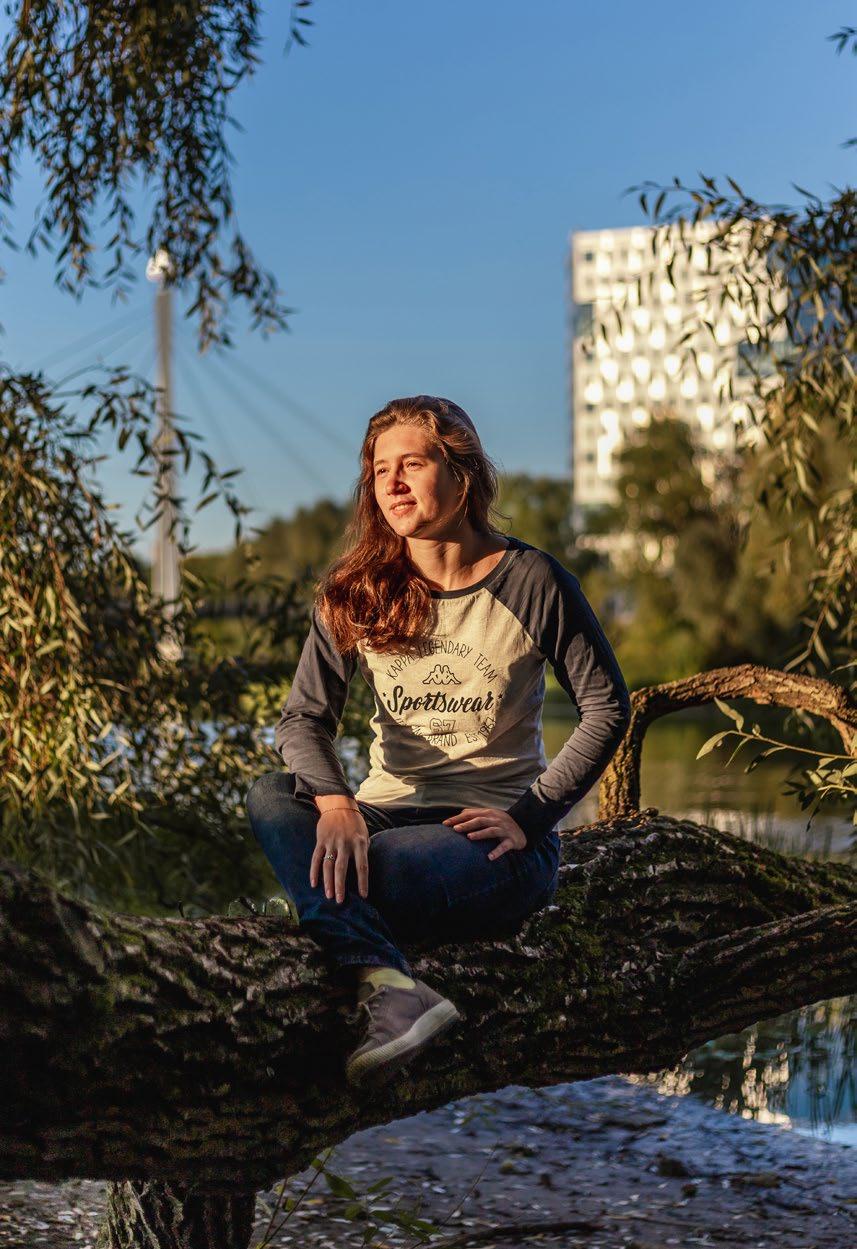
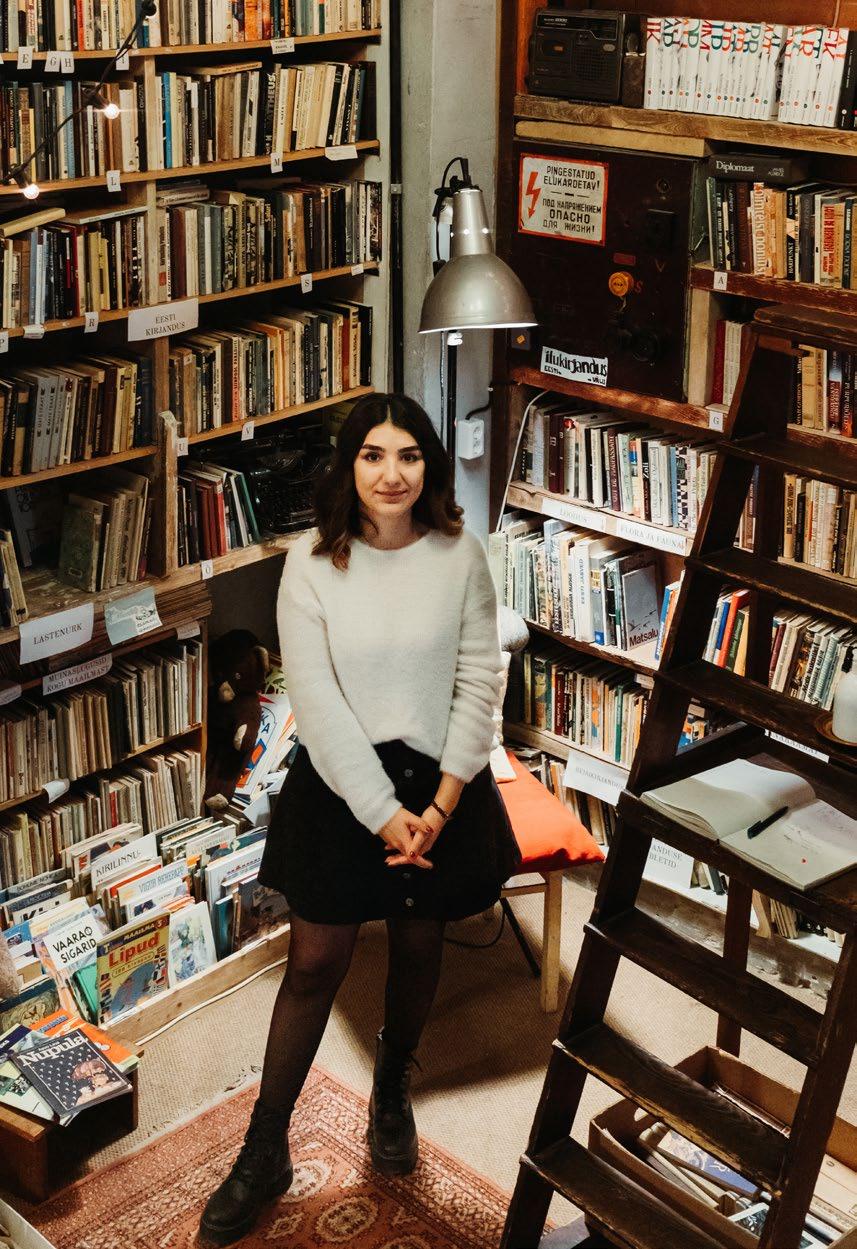
“It makes you more understanding and accepting towards others. It can help learn new things about yourself and may give your life a different purpose.”
Valeriia Matsarenko, Ukraine, Kharkiv, 27 years old, student //
She has just arrived at the end of August to get her Master’s degree in Information Technology Law. Her favourite place is near the Emajõgi river, and she has an amazing view of it from her dorm room. She believes that studying abroad is a great opportunity to grow personally and professionally. In addition, it is a way to deep dive into another culture and become familiar with a different set of minds. Despite the difficult situation in Ukraine, she realised that life doesn’t stop and you have to at least try to make the best out of it. In her opinion, travelling is a better way to expand your knowledge than just reading books or watching documentaries.
0043
// Müşerref Özhan
Sarabi
Sarabi
Valeriia Matsarenko
©Nima
©Nima
“It puts you in a different perspective, challenges you in different ways. You will face issues that you would never find at home, and you will need to think creatively to deal with them.”
Jonas Berx, Belgium, Tienen, 22 years old, student //
“One of the most mesmerizing places in Tartu is the botanical gardens. During spring and summer, these gardens are a go-to place to enjoy nature from all over the world. It is especially beautiful during spring when the Japanese cherry tree is blossoming!”
He has been living in Tartu for more than a year now and he came here because he was looking for a university that had a strong IT presence to pursue a master’s degree in software engineering. Something about Estonia was intriguing to him, whether it was its culture or its digital presence, which is something that he’s still figuring out. He thinks studying abroad is one of the best things you can do in your young adult life before settling down.
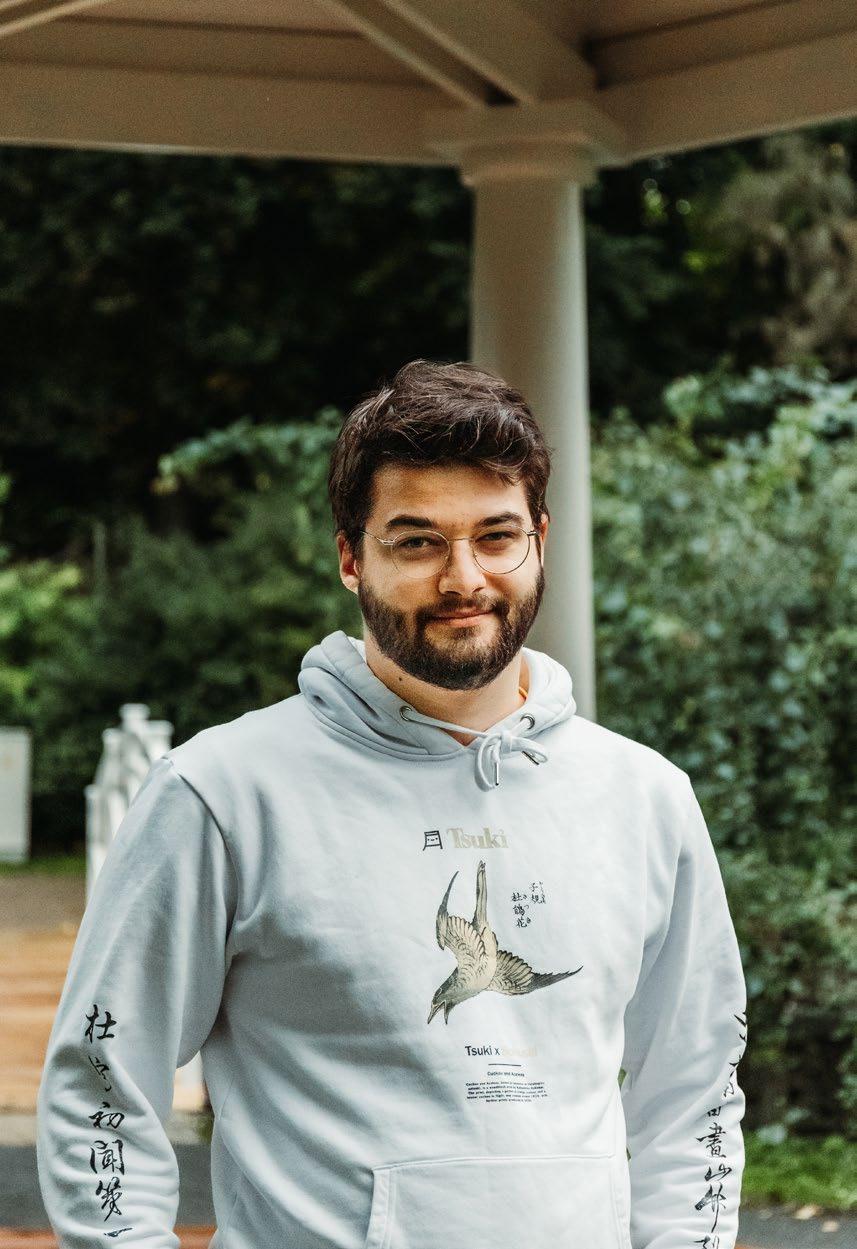
“You gain an immeasurable amount of experience and encounter so many different cultures! Having international study experience is great to have on your CV, it shows your ability to be independent, plus the international culture mix is always nice to have to understand people from other countries. Travelling around the world helps you understand that your country is very different from the next, the customs, habits, food, and culture are all things that can be flipped upside down when you travel to a different country. Travelling to different countries taught me to be a more inclusive person, trying to enjoy life to the fullest and meeting locals and like-minded travellers along the road! And it’s just fun to do!”
Dragana Zorić, Serbia, Novi Sad, 24 years old, volunteer //
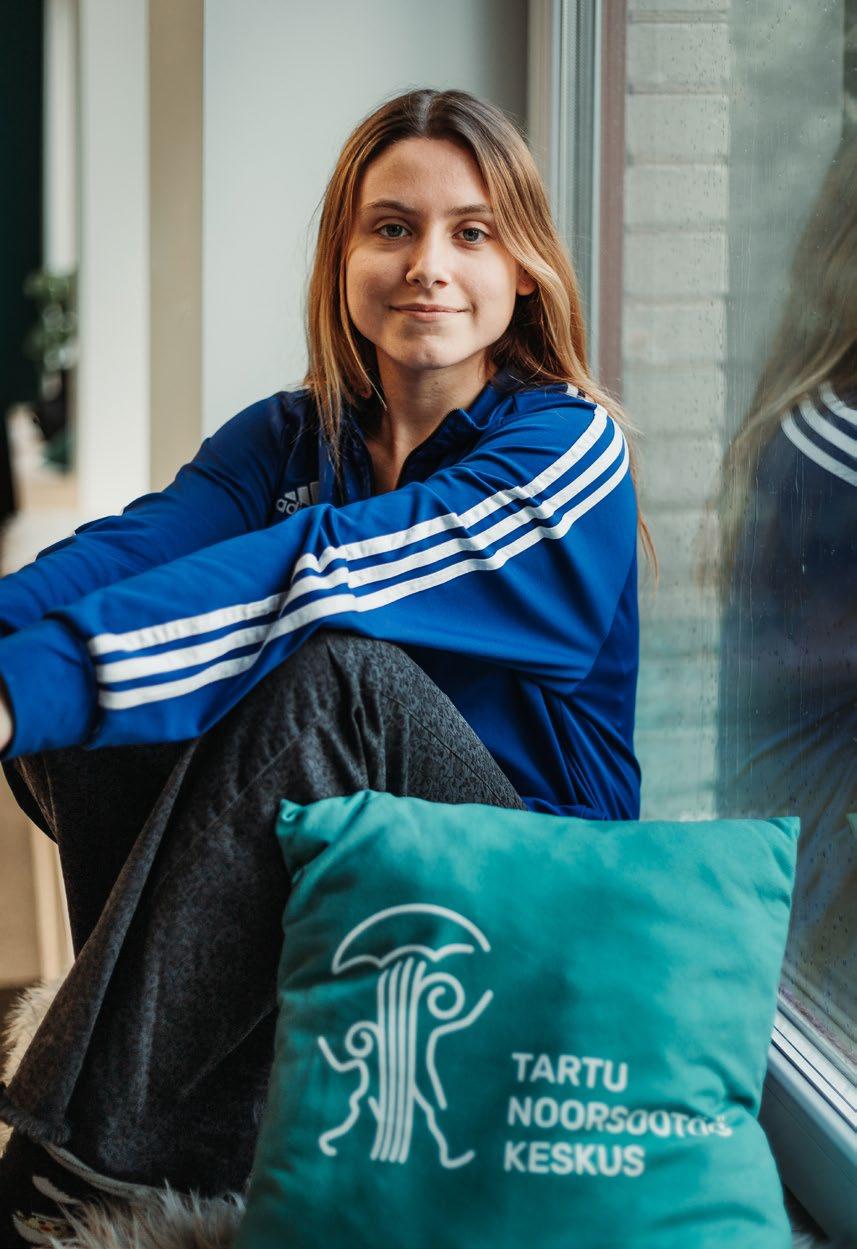
There are many places she has grown very fond of in Tartu as she had time to explore and create memories with amazing people in them. But the first thing that comes to her mind is Anne Noortekeskus, or in English, Anne Youth Center. It’s the home of her voluntary service, the place she has spent many hours working, playing, learning, and growing in an amazing team. She has spent 11 months here. First, she came to Tartu for a youth exchange. The city reminded her a lot of Novi Sad, but it was more compact and more comfortable than that. And then she even found out it is a future European Capital of Culture. A lot of things seemed like a sign that she was supposed to come here and maybe even stay. That is when she found her voluntary service in the youth centre. She believes that such an experience is very important for young minds to find their place in our world. It gives them opportunities beyond comprehension to learn, to create long-lasting bonds, to find exciting new changes in their lives. She started appreciating more about her own country and background after moving to Estonia. She respects the traditions, language, customs and hospitality even more. She is proud to go back home and represent it abroad. Travelling helped her learn more about herself, others, and even her own culture.
“In addition to that, the amount of knowledge, understanding for other cultures and friendships you gain are priceless.”
0044
// Jonas Berx
Sarabi ©Nima Sarabi
// Dragana Zorić
©Nima
Gleb Gomankov/Глеб Гоманьков, Russia, Vyborg (Viipuri/Выборг), 24 years old, student // Inglisild bridge at Toome Hill is his favourite place in the city. Toome park is simply a charming place that introduces many layers of the town’s history and surrounds visitors with legends of the past. It feels odd to realize that you’re casually wandering around the remains of the XVII century fortress that was turned into a park.

“Otium reficit vires”, says the inscription on the Inglisild bridge, and it’s precisely what Toome park means to him: a silent place to wander around in the evening, restoring the energy before the upcoming day of studies. He’s been studying and living in Tartu for almost 6 years, he came here as a student in 2016 after a sequence of unfortunate incidents and spontaneous decisions. At first, he was fascinated by the range of opportunities the university promised to provide. As he became more aware of the town’s history and surroundings, he discovered that the path that led him to this place was relatively common for the youth of his hometown almost two hundred years ago. His experience shows that studying abroad is a journey that can completely change one’s perception of life and the world.
“Something is breathtaking about breaking away from a familiar place and going to an unknown land to start from scratch. Moreover, being abroad is usually about the transformations deep inside your head. It gets much better after the homesickness is over. Travelling gives you an inside look into a new country’s culture; therefore, you can become more open-minded. It makes you experience new things, and interact with different people, and you can also practise or learn a new language with them. You also learn how to get around in a new environment, how to adapt fast and, in some situations, how to improvise. When you are travelling, you feel freer, so you are more likely to do things you wouldn’t normally do at home.”
Balázs Ágrez, Hungary, Budapest, 21 years old, student and volunteer // His favourite place is the Tartu Cathedral because it has a really nice vibe.

“It is a great place to enjoy reading a book or spending time with friends, as it’s a rather quiet place compared to the centre. Even though Tartu (and Estonia in general) is flat, this building has a tower where you can go up and have a nice view. “ When he was in high school, he had the chance to go on an Erasmus+ project in Tartu. He loved the nature in Tartu and the people were really nice. He always wanted to study abroad and now he has been living here for more than 2 years now! He believes that studying abroad is one of the things that everyone should experience at least once in their lifetime.
“When you are living abroad, you need to build up everything from scratch, which gives you a lot of confidence. As you meet people from all over the world, your mindset will be more open and you will see things differently, and this makes you question things that were normal for you before. Besides that, you can meet different cultures, and learn about them. While living abroad, there are obstacles and challenging moments for sure but as you step out of your comfort zone and
0047
// Gleb Gomankov
©Nima Sarabi ©Nima Sarabi
// Balázs Ágrez
overcome the difficulties, you grow as a person and become something more, something better. Travelling gives you a sneak peek into another country’s culture; you can also practise or learn a new language.”
Jeran Paris, USA, Aberdeen, Washington, 23 years old, student //

The Botanical Garden is his favourite place in Tartu. While there are many places in the city that he likes to visit frequently, the botanical gardens provide the most peace when life is tumultuous and the beauty when the news of the world is terrible. But it is also a place worthy of sharing with friends. Working and studying is a busy life for anyone, but he can always come to the garden to let life melt into the background. He has a strange love for all the things in winter from the frigid air to the snow, to the icy swims one can take. He has resided in the Baltic region before and already knew a particular fondness for the people and the culture here. He could have ended up in Finland, where he had lived before, but Finland was far less accepting monetarily and educationally, so Tartu was where he ended up living more than a year ago. “Volunteering or getting an education abroad is an amazing opportunity for anyone. Whether you’re doing it just for a short time to see what exciting new experiences and friendships you can find before moving on or going back home or doing it with the intention of finding a new place to call home, it is never a bad idea to go abroad. It brings the world closer together, builds connections in an increasingly internationally connected world, and, most im
portantly, opens infinite doorways and opportunities and ideas for the future. Travelling helps the younger generation learn new skills and become a better example of themselves. Makes them more responsible, confident, and independent. Also, it’s a great opportunity to deal with challenges, adapt to them, compare different cultures and meet new people and, most importantly, it could change the way they think about things.”
Julia Syrzistie, Poland, Warsaw, 29 years old, volunteer //
Her favourite place in Tartu is TYPA: a letterpress and paper art centre where she volunteers. It’s where she spends most of her time, and where she feels surrounded by lovely people and interesting projects, in which she can get involved. TYPA is where she met most of her friends during her stay in Estonia. In a way, moving to Tartu itself was quite accidental but it gave her the opportunity to spend a year in a country she knew very little about beforehand. She has done both volunteering and studying abroad, and she believes that it really changes you as a person and the way you think.
“It challenges you in ways you weren’t expecting and makes you question your own self. It’s also a great way of getting to know a new place while being surrounded by people in a safe environment. It allows you to try out living abroad without a big commitment such as moving for a permanent job. The downside is that it can get lonely, but it really tests your relationships and lets you see which ones matter and are worth extra commitment. First of all, it’s
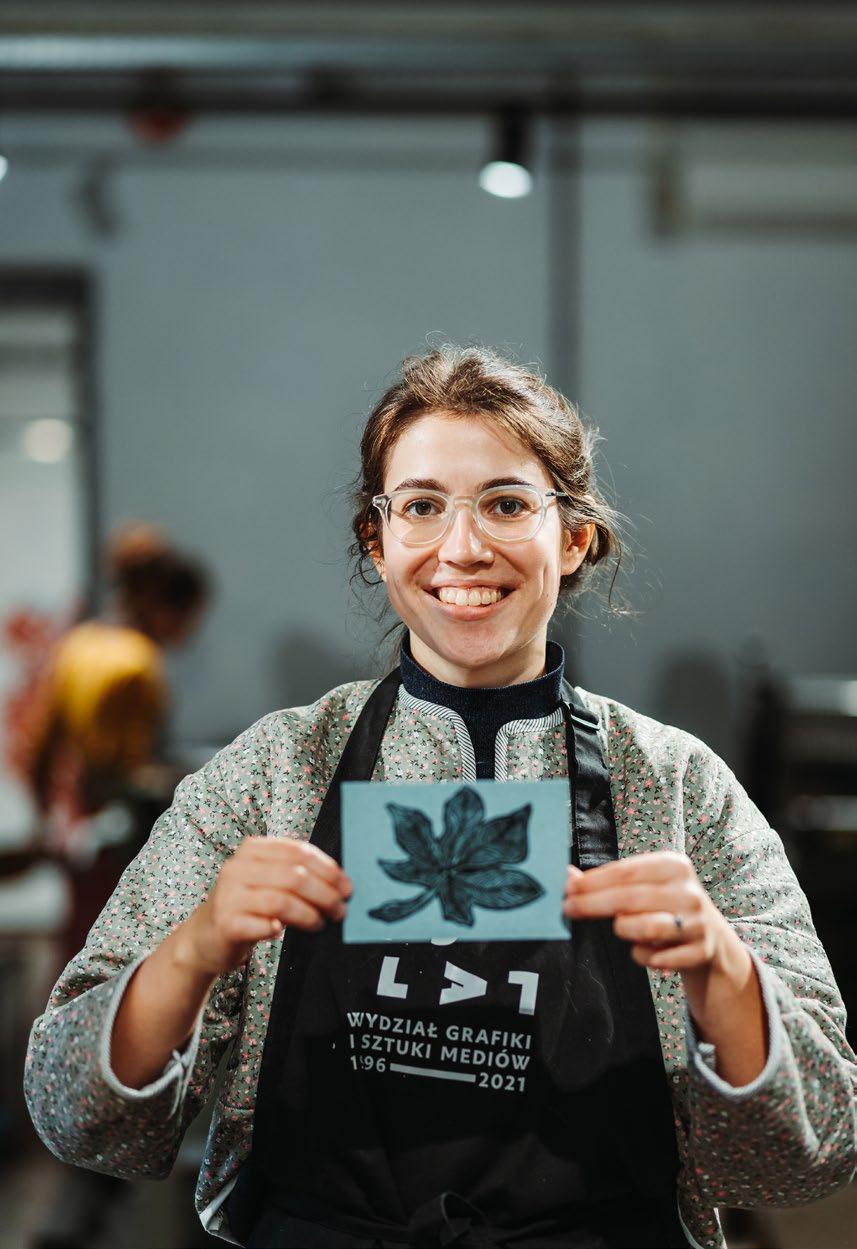
0048
// Jeran Paris
// Julia Syrzistie ©Nima Sarabi
©Nima
Sarabi
really fun! Knowing that you are somewhere for a limited amount of time makes you use your time differently than you would have at home.”
She feels way busier during her free time in Estonia than she did over the last couple of years.
“It also makes you more open to people with different backgrounds and experiences, and it allows you to change in ways you might not have thought of if you never have travelled. “
Nima Sarabi, Iran, Tehran, 37 years old, volunteer //

His favourite place is the Old town − the City centre of Tartu. Tartu is a small city compared to his hometown but has a big heart, and the city centre is the heart of it. He has been living here for 5 years now but, before that, besides the things he heard from his friends, he had no idea about Estonia. One of his close friends who already lived here had a big influence on him moving here as well. It wasn’t very pleasant at first due to the weather conditions and short days, especially during winter, but as soon as he settled down, he started to love living in Tartu. For him, volunteering is about meeting new people and connecting to those who are helping the community he lives in. Also helps him to overcome the challenges of leaving his comfort zone and doing something new with people he otherwise may not know.
“Travelling helps the younger generation learn new skills and become a better version of themselves. Makes them more responsible, confident, and independent. Also, it’s a great opportunity to deal with challenges, adapt to them, compare different cultures and meet new people and, most importantly, it could change the way they think about things.”
Izabella Eck, Hungary, Veszprém, 24 years old, volunteer //

Her favourite place in Tartu is the town hall square with the big Tartu 2024 landmark. It represents the reason why she came here and reminds her of the things why she’s doing this voluntary work. She’s been living here for 9 months now working with the Tartu 2024 team on the European Capital of Culture programme. She came not only from another ECoC city but from Tartu’s twin city as well! She fell in love with Estonia the moment she set foot there. Volunteering for her is something that she has been doing for years now, but doing it on an international level is a whole new experience.
“You can meet many individuals from all around the world and learn about their culture, history, and traditions by volunteering or studying abroad. There are no comparisons to be made with this adventure. Longer stays abroad encourage you to reconsider your own traditions and culture. It forces you to stretch beyond your comfort zone and teaches you how to be more self-reliant, understanding, and sensitive toward other people. You can always learn about countries from the internet or books but travelling and actually being there is the best way to explore
0051
// Nima Sarabi
©Nima Sarabi ©Nima Sarabi
// Izabella Eck
the world. By overcoming difficulties and hurdles, you will pick up new skills. It will be the most exciting time of your life and you will meet fantastic people and form lifelong friendships.”
The Causes of Homelessness are More and More Numerous | Maja Babić
When I summarized the profile of a typical user of the homeless shelter “Svratište” at the beginning of my work with the homeless, it looked like this: A man in his early sixties who had been divorced for a long time or never even married. He grew up in a poor family without a father or with an abusive father, and with a lower education. We used to say alcoholic, but now we use more “appropriate” phrases. Typical categories no longer exist. The homeless shelter in Novi Sad includes a former university professor: a lady from a famous and well-to-do family and someone who raised six children. Until now, the city of Novi Sad has taken care of its homeless people much better than in our other cities. During the six colder months of the year, containers are available to the homeless where they can spend the night. In “Svratište”, they can hang out there during the day, get hygiene treatment, clean clothes, dry meals, hot drinks, professional help in obtaining documentation, and other services. The capacity of “Svratište” has doubled a few years ago by upgrading and adapting the existing one. Mostly men walk the corridors of the shelter, while the immobile ones in the beds are mostly women. The most numerous are those who were lost in the transition and fled from the former republics during the wars of the 1990s. After them, there are people with the so-called F diagnosis: F10, F20, F00 (alcohol or other substance abuse, psychosis in remission, those who can no longer take care of themselves due to brain damage). It seems that stereotypes of the homeless in the general public tend to be polarized between demonization (“as ye sow so shall ye reap”) or pathetic idealization (“please share on Facebook the picture of this old lady selling flowers outside the market in order to pay for her rented room”). While the reading books are still convincing children of the dogma of the fable about the cricket and the ant, reality refutes it. The support expected in old age and misfortune is now unreliable because the ground on which they stand on has become too shaky. We “invest” in children, but they are forced to be economic immigrants on other continents. We cling to a secure job, but then we are shocked when we realize that the employer did not pay the contributions and that we will not be able to receive a pension. We pay the contributions ourselves, but the medicine and interventions for the disease that befalls us have been removed from the list covered by the insurance.
0052 0053
Also, the assumption about alcohol abuse, as the leading risk for homelessness, is methodologically questionable. Which is older, the chicken or the egg? The causes of homelessness are more and more numerous. That is why it is important to strengthen the basic supports for all people (care for physical and mental health, healthy and strong family relationships, education...). Just as the strongest pillars will collapse and sink if they are on a bad foundation, it is equally or perhaps even more important that we are enabled to live in a safe country where laws and social justice apply to everyone equally.

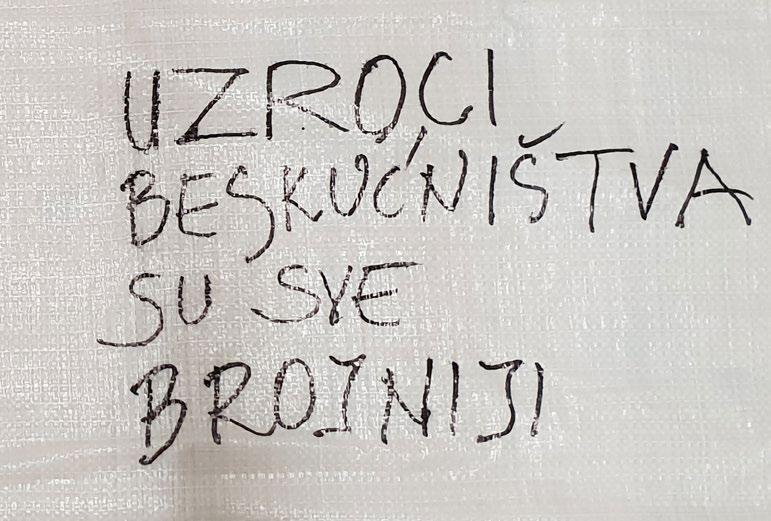
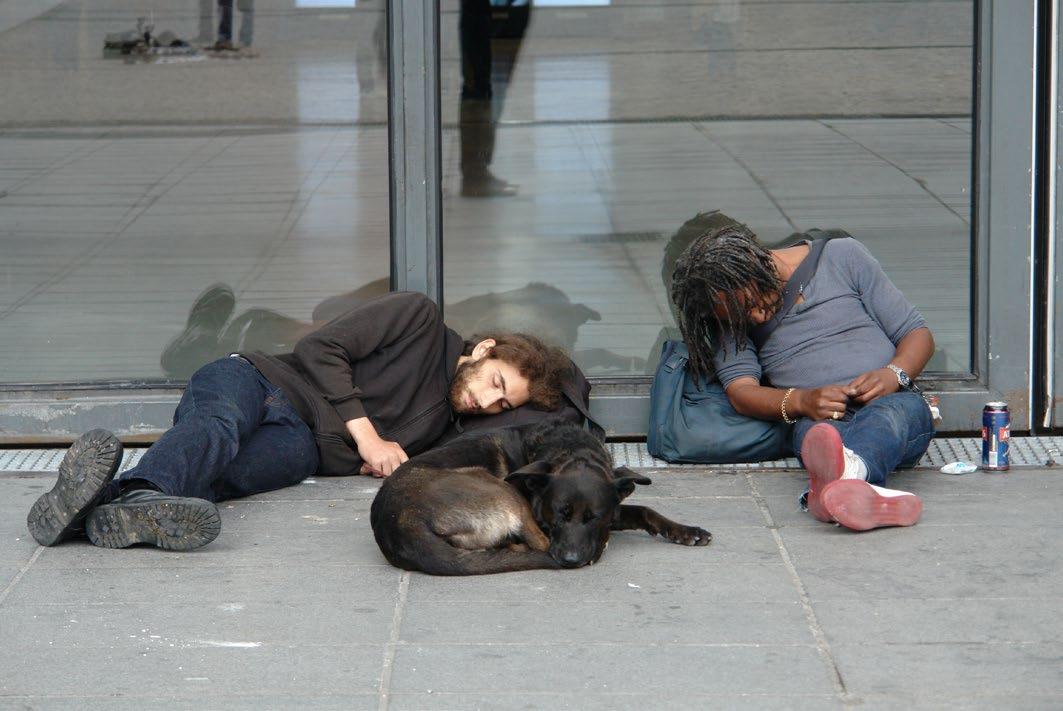

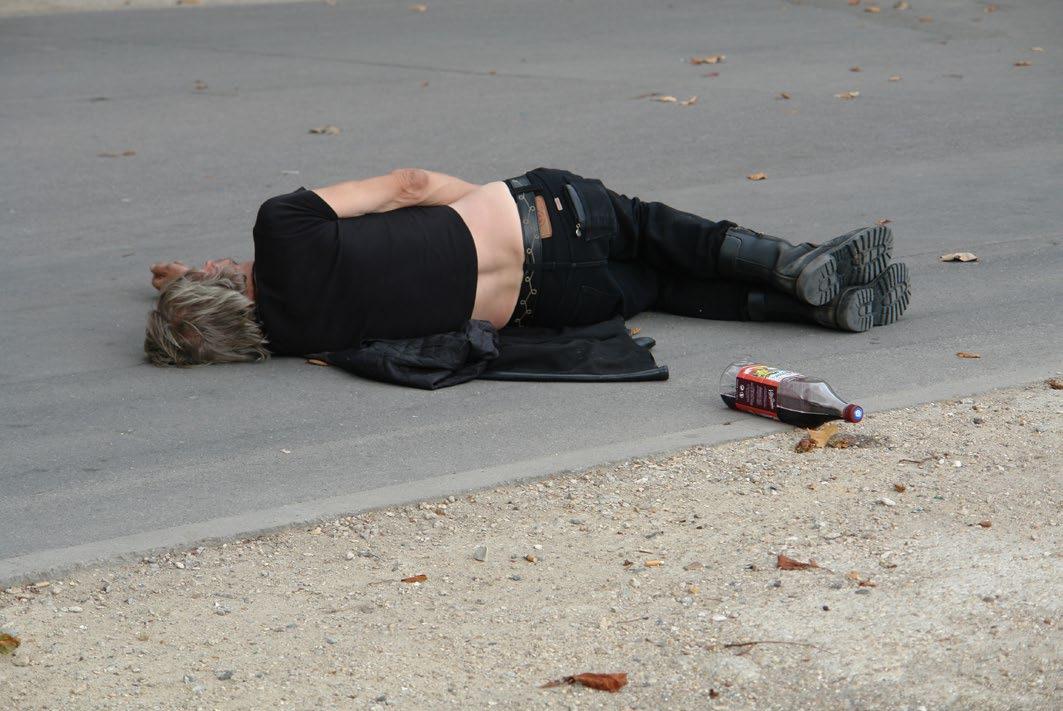
// Dragan Vojvodić, Death in Paris , Paris, 2011 photography // Dragan Vojvodić, Death in Paris , Paris, 2011 photography // Ljiljana Maletin Vojvodić, Dragan Vojvodić & Maja Babić, Homelessness Creative District, Novi Sad, 2022 installation // Ljiljana Maletin Vojvodić, Dragan Vojvodić & Maja Babić, Homelessness , Creative District, Novi Sad, 2022 installation // Dragan Vojvodić, Death in Paris , Paris, 2011 photography
“Nothing will be known about me. Nothing will be named after me.” They are asking me to work with him because he is problematic. He drinks, he doesn’t hide it, he is rude to the staff. However, he is very polite and cooperative when talking to me without any signs of manipulativeness and desire to be liked. He’s terse in speech. He admits that he drinks but doesn’t get drunk (which is true) and snaps at the workers because “they treat him like scum which he’s not.” “They turn a blind eye when others get drunk and break the house rules, however they persecute him.” He sees injustice all around him and reacts strongly to it. Those who assign diagnostic labels would have ready for him: “hypersensitive and interpretative”. While working with him, it is revealed that he is actually reacting to that other old injustice that he was not allowed to say, he reacts to it in a way to not worsen the already unbearable. He did a nice and creative engineering job in Croatia. Fast forward: aggravation before the war, he gets fired from his job because he’s a Serb, marital relations deteriorate because of it, divorce, war, emigration. The young sons stay with their mother. In Serbia, he does physical work without insurance until his health has completely deteriorated. He doesn’t have the money to pay the rented apartment anymore or to get medical treatment. The final blow: his sons called him to tell him that they had changed their first and last names. The mother’s surname is purely from Zagorje, and instead of the Serbian names, which their father chose, they took the names of Croatian kings. They are making excuses, but he
understands that it is difficult for them too. They could no longer bear the bullying of their peers at school. They were beaten several times. (Such things don’t happen only to us. In the 1980s, the owners of pastry shops, Goranians, out of fear, added the suffix “ić” to their surnames?) In my vivid memory are the lines: “Nothing will be known about me. Nothing will be called after me” of the song “I agreed to be everything they want” by the famous rock group from Sarajevo “Bijelo Dugme”, for which the lyrics were written by Duško Trifunović, who was almost homeless himself towards the end of his life.
* Two weeks ago, this shelter user left the facility at his own request. Not long after that, he was found dead near the train station. I hope he found justice in the place he is now. Unfortunately, this is the most common epilogue to stories about the homeless.
Belle de Jour According to all the theories, she had no chance of being homeless. A child from a better home. It can be seen that she is well brought up, “knows what’s order”. Above average beauty, great figure, always with a lovely smile. If you forgot to put on your glasses, you would be fooled and thought that she is about thirty years old, not even close to seventy as she really is. In fact, what deceives the most is her girl-like attitude. She is annoying like a child because she needs you as her parent. She keeps coming up with the same questions and she compliments others appearance hoping she’ll get one in return. Her mother worked abroad. She
packed love in expensive clothes that she’d send when she couldn’t come. She rarely came, but at least her child walked around the city dressed like models from the world magazines; everyone admired her. Then, she started taking off her clothes. Everything. She started working as a stripper in finer hotels on the northern Adriatic. She says that she was appreciated and that she was making good money. The only thing is that she has never been good with it. She would instantly spend it on clothes. The more expensive the fur coat was, the more she hugged and loved it. She spent all her family inheritance on beautiful and expensive things. And now, when she gets the pocket money prescribed by law, which should satisfy some other needs, she spends it in a store full of colorful cloths on the same day. She doesn’t mind criticism, scolding and ultimatums. An innocent smile, a lovely posture of a marble neoclassical statue and perfectly fitted clothes will get enough admiration, which, translated into her native language, means: “you are worthy, I love you”.
Forbidden love
They are both middle-aged and have been in the shelter for a long time. That’s where they met and fell in love. Both of them were denied employment. His face was as black as if he had come out of a mining shaft, badly intellectually damaged, partly from long-term alcohol abuse and partly from a series of strokes as a result of drinking. He barely speaks intelligibly. A cigarette is always in his hand. He is unable to take care of his basic needs without the support of another person. Mentally underdeveloped, she had a relationship from which she has several children, who do not want to hear about her, whose fate is similar to hers. Until she was placed in the shelter, she engaged in prostitution on Kaćka loop. He keeps promising her that he will marry her and take her home, which he doesn’t have. In the institution, they limit their dates because when they meet, he accuses her of infidelity and often beats her. That’s how he “plays husband” because he doesn’t see it any other way. She steals things from others in her department to make him happy. Since they started making her wear things without pockets to prevent her from stealing, she started hiding the stolen things in her socks. Abraham Maslow seems to have mixed up the order in the hierarchy of human motives after all. The need to belong to someone is sometimes more important than physical integrity.
From thorns to stars and back
He was placed in the shelter at just under fifty years old, in a serious state of health. Various diagnoses, the most serious − diabetes that could hardly be stabilized. Cachexic, sunken cheeks, slumped shoulders, closed, serious, his gaze directed more often to the floor than to the interlocutor. Silent, but he speaks only when someone addresses him first and then he gives the impression of a stable and educated person, even though he is not. He is still like that even after twelve years of being in the institution. If you could turn off the picture and just listen to his pleasant voice you could imagine him hosting a travel show while a famous Norwegian
0056 0057
actress is falling in love with him. The color of his voice, intonation and accent do not give away his origin. Typical biographical data: has an uneducated mother who comes from a village from another republic to the city with a small child, she has hard and poorly paid jobs, his father left them before he was born, he has been eager for everything since he can remember. The miracle he wished for every night before going to bed happened at the end of his high school. He had a gift for gambling. Everything started very quickly. At first he gambled for others and had a smaller percentage of the winnings, then he became independent. In the 1990s, the first so-called “fun game parlors” with poker machines and other games of chance were open. A third of them in city were his. “A rich man pays for a musician to follow him. The time comes when everything turns around. The time has come and now they follow me.” He became so wealthy and involved in the business that he then paid others to gamble for him. It lasted for some time and then at one point it started to collapse. He did not notice that the losses were increasing. Gambling perception is a camera obscura. He was left without anything and his health severely and irreversibly damaged. Solace: he didn’t owe anyone anything. He soon became highly respected in the shelter. Like a saint, a former great sinner. He doesn’t speak, but he never turns down a single request for help, neither from the employees nor from other users of the shelter. He is still engaged throughout the day. He accompanies disabled people to medical appointments, goes shopping several times a day, fixes
their televisions, adjusts their mobile phones, etc. He refuses the honor because he knows (he is not afraid, but he knows for sure) that if he has money with him, he will start to gamble again. For the same reason, he agreed to stay in the institution. It’s a protective bubble that prevents him from restarting his old obsession. He does not contact his family. He ashamed them. Everyone in the institution respects him, but he still feels that he has not atone for his sins. He goes into relationships with younger users of the shelter who have suffered injustice, violence and rejection. It’s like he’s trying to bring back the past and save his mother who died very young and no one was there to help. In those relationships, he is like a savior. He buys them nice things, orders food if they don’t like the canteen lunch, patiently listens to them and comforts them when they cry at night and retell what they’ve been through. He wants to see them happy and they really transform for a while. It lasts for a short time because the cloak of the princess that he has draped over them cannot stop the ghosts of the past: mental changes due to substance addiction, psychiatric diagnoses and emotional instability. They start to be possessive, jealous and they take out all the anger they had towards men who hurt them on him. They cause incidents in the collective. Hence, he adds new failures to his list and regardless of the assurances of professional workers, he deeply and incurably feels that he is sinful to the core and that he will never be able to redeem himself, even though he is sure that he will work on that for the rest of his life. He never asks for help and he doesn’t like to talk
about himself except when he warns that gambling is a great evil. Although, if you rewind an imaginary recording of your conversation about the period that he is most ashamed of and play it again in slow motion, you would register the moment when someone completely different emerges from under the ascetic facade. For a moment, his gaze rises towards you, his chin arches proudly, his chest puffs out, his shoulders rise as he utters the sentence: “I was able to buy an apartment after a few days of gambling.”
Irreversible
She was brought to the Shelter in her mid-twenties. Professionals and health workers gathered around her as a team of restorers because we perceived her as a valuable artifact severely damaged by traumatic events in her early childhood, during the war in the former state and then in exile. She was silent, always with her eyes wide open without looking anything, she didn’t direct her gaze toward anyone. It was difficult for her to get the words out, but slowly some segments of her biography began to come together: she lived in prosperity until the war... traveled Europe... she speaks foreign languages... has a gift for art... We learnd from the documentation that she was an eyewitness to mutilations and killings of her relatives during the war. When she escaped, without a family, barely of legal age, and naive, she became a victim of human trafficking. She was resold several times... Kosovo, Semberija... Fortunately, it was confirmed that she was not an addict and did not have an incurable disease.
We put her in the occupational therapy rooms of the nursing home to separate her from the other users of the Shelter. She made lovely ornaments from modeling clay for the Christmas tree. Eyes still wide open, she did not speak spontaneously. As if hypnotized, she existed mechanically because she has split into two persons with a powerful defense mechanism. The one who is here and doesn’t feel, because if she felt she wouldn’t be able to bear and survive everything that happened to her. The other, the true self, she buried somewhere, hid, and we could never reach her. She left the Shelter once again, manipulated by some sneaky pimp. Unfortunately, the promises of such people seem more tempting than the help of those bound by profession, ethics, and science.
I saw her around the train station once. I called her name, but she didn’t recognize me. She looked at me with the same wide eyes. I never saw her again after that.

0058 0059
The bystander effect14 or why me?
*The bystander effect: “The more witnesses there are, the less likely it is that one of them will help. People in the group expect that the responsibility rests with someone else.”
John Darley and Bibb Latané, social psychologists
When we see a homeless person begging, an adolescent harassing a peer, or a neighbor beating a woman, we ask ourselves: “Why doesn’t someone do something?”. We are convinced that the responsibility for solving the problem rests exclusively with the institutions, the state, and the system...
And what do we do by ourselves? Let’s share a post on a social network to help someone in need. Let’s pay some amount to the bank account. Let’s help adopt a dog. It will be a nice topic that we will mention, by the way, during the coffee break. Conscience is not so difficult to appease. And it is easy to be calm in your apartment, without other people’s unpleasant smells, unwanted sounds, repeated requests, and disappointments.
Why Should I Wait for Charity Campaigns
| Interview with Sara Milačić by Ljiljana Maletin Vojvodić
Keywords: homelessness, poverty, social exclusion, individual citizen initiative, sensitization of society, empathy
For “Dobri tvor” (wordplay from dobrotvor which means charitarian in Serbian: Dobri –good, Tvor – skunk, hence the logo), Sara Milačić, who is a young English teacher and a dance choreographer, there was no dilemma about what she could do for others. For this woman from Novi Sad, the homeless, poor and socially excluded fellow citizens are not a marginalized and invisible “problem”. She collects clean clothes and shoes, packs them in gift bags and leaves them to those who need such help. Near dumpsters, in places where the homeless gather or near buildings where socially vulnerable families and individuals live.
Is happiness just a selfish concept, and selfless giving a transcended romantic literary narrative? Can an individual do anything alone? Do we have to be powerful, rich, institutionalized to make life better?
It is human to feel happiness when we do something for someone, I would even say it is logical. By the same logic, we could also question other life choices in which we selflessly give, for example, ask the question whether it is selfish to give birth to children. Happiness is an emotion, not a concept. Altruism is something that will never go out of fashion, it is a way of life. It is always the individual who takes the initiative, and inspires and motivates others, which is equally important. There are many “ordinary” people who want to make life better for themselves and others, but they are almost invisible due to their modesty and pure love for the community. In some way, I began to look at others as my neighbors, who wouldn’t hesitate to knock on my door in need for some sugar”.
How did you decide to start helping completely unknown people on the street without any institutional help, donations and grants?
We can always start with our resources, whether they’re material or not. I started with my own things, then my family helped, and then it spread to social media, where I asked for help from people I randomly followed. I was thinking: why should I wait for charity campaigns, which are usually happening around holidays, if I can help a little every day? For something like this, the cost is small but the goal is very significant.
Although the number of the poor is increasing, a negative and stereotypical attitude towards the homeless and poor people prevails, which is mainly reduced to “turning the head”. How is it that people without the help of family,
14
0060 0061
Bystander effect, the inhibiting influence of the presence of others on a person’s willingness to help someone in need.
friends, social networks, single parents, people without permanent residence, employment, elders, women, and children, are not invisible to you?
A small man recognizes the pain of another small man, while the rich remain trapped in their own bubble. Just remember the words of the “great princess” addressed to the plebs, quoted by JeanJacques Rousseau: “If they have no bread, let them eat cake.”
Unjustified, illogical, and discriminatory ideas about phenomena, events, and people are difficult to change, but it is necessary to do so in order to be better both as individuals and as a society. Can we influence clichés with individual initiatives?
As long as we observe someone from a distance, we cannot escape stereotypes. Let’s get closer to the person and we will see that the assumptions, our own or the ones we took over, are often not correct. It is the first step towards changing an individual and then maybe the collective consciousness.
It is a fact that you have been helping your fellow citizens for several years and every day. But also that humanitarian work is not charity for you. Each of your gift packages, decorated with a bow and a smiling skunk, also contains a message of cheerfulness.

My idea was that those who cannot afford a gift for themselves or others should receive or find it, and we must admit that all people in this world get delighted by a colorful packaging with a bow. If we choose our words not to offend someone, why shouldn’t we choose the way in which we will give what we no longer need? It’s not difficult for me to bring those bags every day when I
leave home, because it might be the only day someone gets a real gift.
Socially excluded people are often untrustworthy and vulnerable due to a difficult life, illness, various bad experiences, and discrimination. At first, you left things packed in decorated bags in public places, but over time you started to hand out clothes and shoes personally. How did they react to your gifts? What do they need the most?
I try to approach people cheerfully and with a smile, which is why I notice that they don’t feel embarrassed when I approach them, for example, when they’re looking for something useful in the bins and dumpsters. I mostly encountered those who would express sincere joy and gratitude. I remember a wonderful homeless man who felt the need to hug me. Lately, I have been meeting families who contacted me on their own because they found me on social media, so I send gifts to other cities as well. I’m glad that we live in the age of technology that somehow requires everyone to have the Internet, because it helps us to get in touch with those who have hard lives, even though they have a roof over their head. Next to food that I sometimes receive in donations, clothes and shoes for all seasons are needed the most. Therefore, the gift contains a little bit of everything, for example a sweater, a Tshirt and a scarf.

“Dobri tvor” has its own Facebook and Instagram page. On them, you also post photos of the locations where you leave your gifts. Did social media help you encourage people to join you?
For the first few months after “Dobri tvor” was created, I was leaving small gifts but I
didn’t want to reveal who I was, because I wanted the act to be seen, which is more important than who does it. When I created profiles on social media, I discovered a new world of wonderful people who love to help. The photos have the location of the gift in the description: maybe someone will see it and go get it, someone will think of a better location and move it, and someone might tell another person where they can find it. I am incredibly grateful to everyone who participated in this campaign with their donations, because without them “Dobri tvor” wouldn’t have been able to make so many people happy. I like to say that publicly and post what they have donated, because it is very important to encourage others to do the same, in whatever way they can. We all have clothes and shoes at home that are too small or we’re tired of, and we can always pass them on to someone else. I often point out that anyone can do this at home. My original idea was for others to take on the role of “Dobri tvor”, but I’m still waiting for that to happen. The question remains whether it is difficult for them to do that or they just believe that I will know better where to leave and whom to give. What surprised me the most was that humanitarian Igor Bjelac, all the way from Canada, found me on Facebook and connected me to Ćazim Salihi, who gives away meals from his fastfood restaurant. We cooperate wonderfully, ideas are coming every day, and we believe that we will soon expand the “Dobri tvor” campaign and create an organization that will also make our fellow citizens happy every day with food, clothes, shoes and other necessities. Perhaps a more formal type of help will have a greater impact in the society.
0062 0063
// Dragan Vojvodić, Death in Paris, Paris, 2011 photography
// Ljiljana Maletin Vojvodić,
Dragan Vojvodić & Maja Babić,
Homelessness , Creative District,
Novi Sad, 2022 installation
The Japanese slam poets trio Kujira Sakisaka, Joh Tachibana, and Kohta Nagasawa, photographer Takafumi Kano and multimedia artist Chihiro ITO, in cooperation with EU-Japan Fest from Tokyo participated in the Art Box AiR program 2019−2022. During their stay, Art Box made it possible and organized a slam evening event, photo exhibition, and workshops for the students of the Art and Philological High School (Škola za dizajn “Bogdan Šuput”, Karlovačka gimnazija, Sremski Karlovci).
The Song of Endless Flowing Water | Kohta Nagasawa
up to the home itself, can’t we say that the home itself fell into a kind of dysfunction of breathing too hard? What I felt strongly about was that home is not necessarily the place where I and my family members return…It was new and fun to have a close time with family which was previously impossible; however, I suddenly felt an immense and unexpected feeling of hopelessness. For example, I felt such a feeling while standing in the kitchen after finishing washing dishes finally. A column I see. The flow of water is endless as if it poses a fundamental question in human history: where do you come from and where do you go? As soon as I lost my identity, my family became an unknown someone… That would be a poem and song for me. And for you… “
https://soundcloud.com/lho19iajvdaf/the-song-of-endless-flowingwater/s-FkSSXBLKBL7?utm_source=clipboard&utm_medium=text&utm_ campaign=social_sharing
Poet, singer, songwriter/rapper Kohta Nagasawa was born in Tokyo in 1983. He has long been interested in the relationship between voice, words, and body. His main activities are reading and creating poetry. Since 2011, he has managed his own project, Nagasawa Chorus, which mainly gives performances of his original songs. Furthermore, he is trying to make rap-style lyrics concentrating on rhythms and flows. His publications include lose dog (2008) and Nobody is here (2016). He participated in the Art Box project with poets Joh Tachibana and Kujira Sakisaka in 2019.
New Flag For New People I Chihiro Ito

“I came to Novi Sad (Art Box AiR) from my home in New York City to continue my New Flag For New People project. As an immigrant moving from Japan to a new home in a foreign land, I use the flag to communicate a message of positive energy and connection beyond borders. For each version I paint a vegetable on the flag that represents the uniqueness of the location. For Novi Sad I chose a Quince fruit. I performed flag waving in a variety of places around the city where I love. I would like to say here is a new home for me at that moment.”

Chihiro ITO is a painter, multi-media artist, and filmmaker. He was born in Tokyo where he studied painting at Musashino Art University, also he took a continuing education writing course at the School of Visual Arts. He was an invited artist at European Capital of Culture events in Portugal, Cyprus, and Serbia. In 2018, he received a grant from the Japanese government to stay in the US for his art activity and research Fluxus, the avant guard arts movement founded in NYC in the 1960s. During that time, he encountered the godfather of avant-garde cinema Jonas Mekas. This experience deeply impacted on his art making practice encouraging him to incorporate poetry into his video making approaches. He is the recipient of a Holbein award (2017), a New York Foundation for Arts grant (2021), a Robert Rauschenberg Foundation grant (2021), an award from the Monira Foundation (2022), The Poetry Project (2022) and The Elizabeth Foundation for the Arts (2022), Bronx Art Space for A.I.R. in Governors Island by “NEW FLAG for NEW PEOPLE” project.
“Being forced by COVID19 to stay at home has brought us the strange experience of losing our home while staying home. We lost daily greetings such as I’m off or I’m leaving as well as I’m back, I’m home and how was your day. If the free comes and goes of residents enable the house to breathe when tied
0064 0065
Japanese Artists during ART BOX Artist-in-Residence program 2019–2022
// Chihiro Ito, New Flag for New People , Novi Sad, 2022 performance ©Mica Scalin
“In 2020, my Serbia photo exhibition was postponed for one year because of the Coronavirus pandemic spreading around the world. The Japanese government declared a nationwide state of emergency elsewhere in the world. I live in Chiba which is next to Tokyo now. The infected people of Chiba are hundreds fewer than in Tokyo. Chiba people asked to stay at home to prevent the spread of coronavirus unless it is necessary. Almost all museums and galleries were closed. Tokyo Olympics was postponed for one year. All Japanese Traditional Festivals were canceled. People were staying home in selfisolation, for social distancing because of taking measures to stay healthy. Therefore, I work from home. And I rewatched my Tokyo street photos taken in 2012 – 2015. Since the Great East Japan Earthquake in 2011, Tokyo continued to grow rapidly for the 2020 Tokyo Olympics and Paralympics. I wanted to take photos of the gestures, situations, and emotions of ordinary people in that era. I went to many different places in Tokyo to take photos. For instance, I was walking the streets in Shinjuku, Shibuya, and Ginza and walking old downtown (e.g., Fukagawa). My Tokyo street photos, titled Tokyo Holiday, were taken with a film camera and 50 mm lens.”

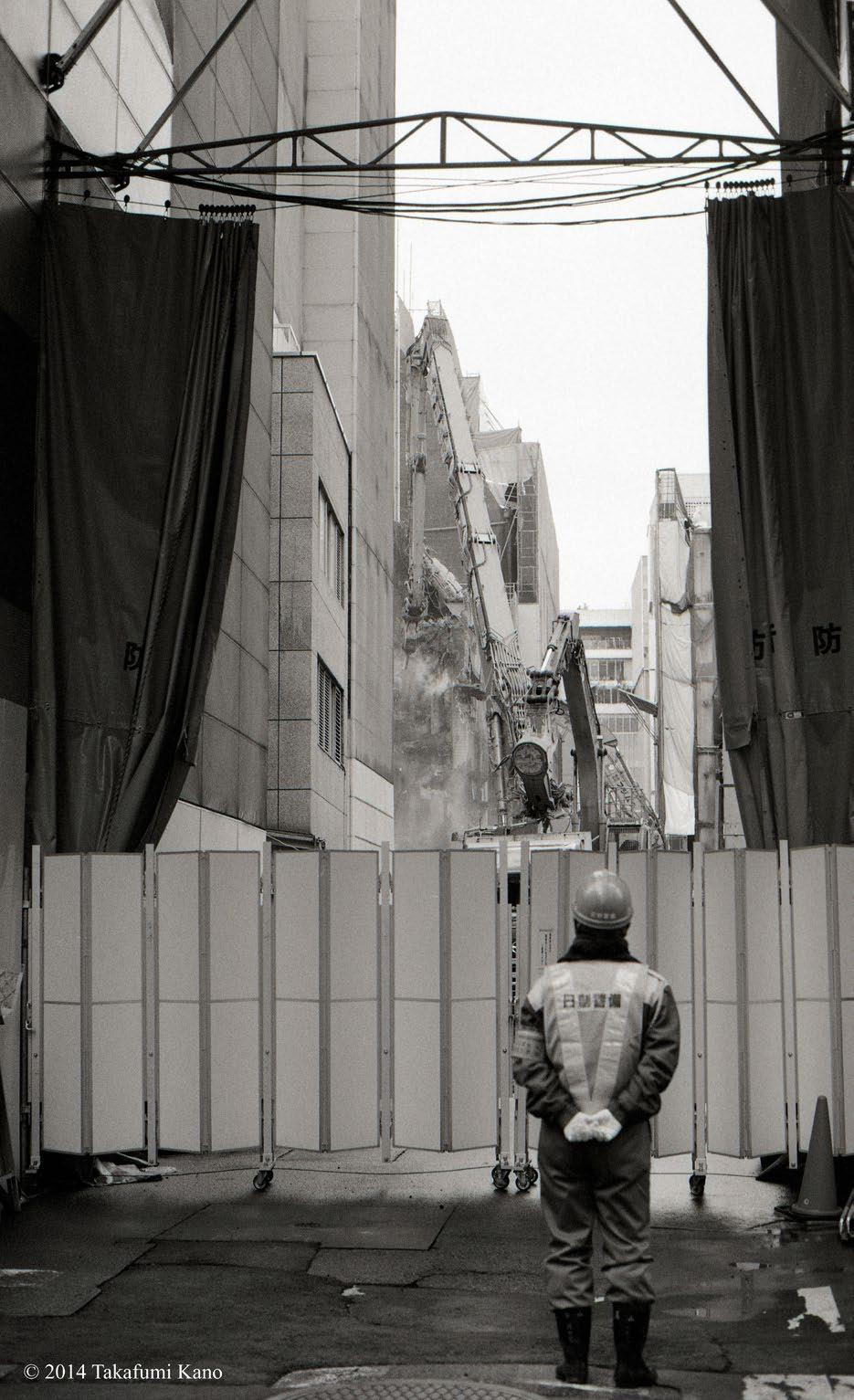
0066 0067
Tokyo Holiday I Takafumi Kano
Takafumi Kano is a Japan-based photographer and a member of The Photographic Society of Japan. He exhibited a series of his photos during his artist-in-residency project in Novi Sad (Fukagawa, KS Svilara, Novi Sad, 2019).
// Takafumi Kano, At Ginza Winter , Tokyo, 2014
photography ©Takafumi
Kano
//
Takafumi Kano, At Shinjuku , Spring, Tokyo, 2013
photography ©Takafumi Kano







 // Dragan Vojvodić, Inventory Konstepidemin, Göteborg 2022 installation // Dragan Vojvodić, Inventory, Konstepidemin, Göteborg 2022 installation
// Dragan Vojvodić, Inventory Konstepidemin, Göteborg 2022 installation // Dragan Vojvodić, Inventory, Konstepidemin, Göteborg 2022 installation


 // Dragan Vojvodić, Inventory Konstepidemin, Göteborg 2022 installation
// Dragan Vojvodić, Inventory, Konstepidemin, Göteborg 2022 installation
// Dragan Vojvodić, Inventory , Konstepidemin, Göteborg 2022
installation
// Dragan Vojvodić, Inventory Konstepidemin, Göteborg 2022 installation
// Dragan Vojvodić, Inventory, Konstepidemin, Göteborg 2022 installation
// Dragan Vojvodić, Inventory , Konstepidemin, Göteborg 2022
installation



















 Relocation / Expropriation / Gornje Nedeljice, Brezjak | Ljiljana Maletin Vojvodić & Dragan Vojvodić (installation, photographies)
Relocation / Expropriation / Gornje Nedeljice, Brezjak | Ljiljana Maletin Vojvodić & Dragan Vojvodić (installation, photographies)






























